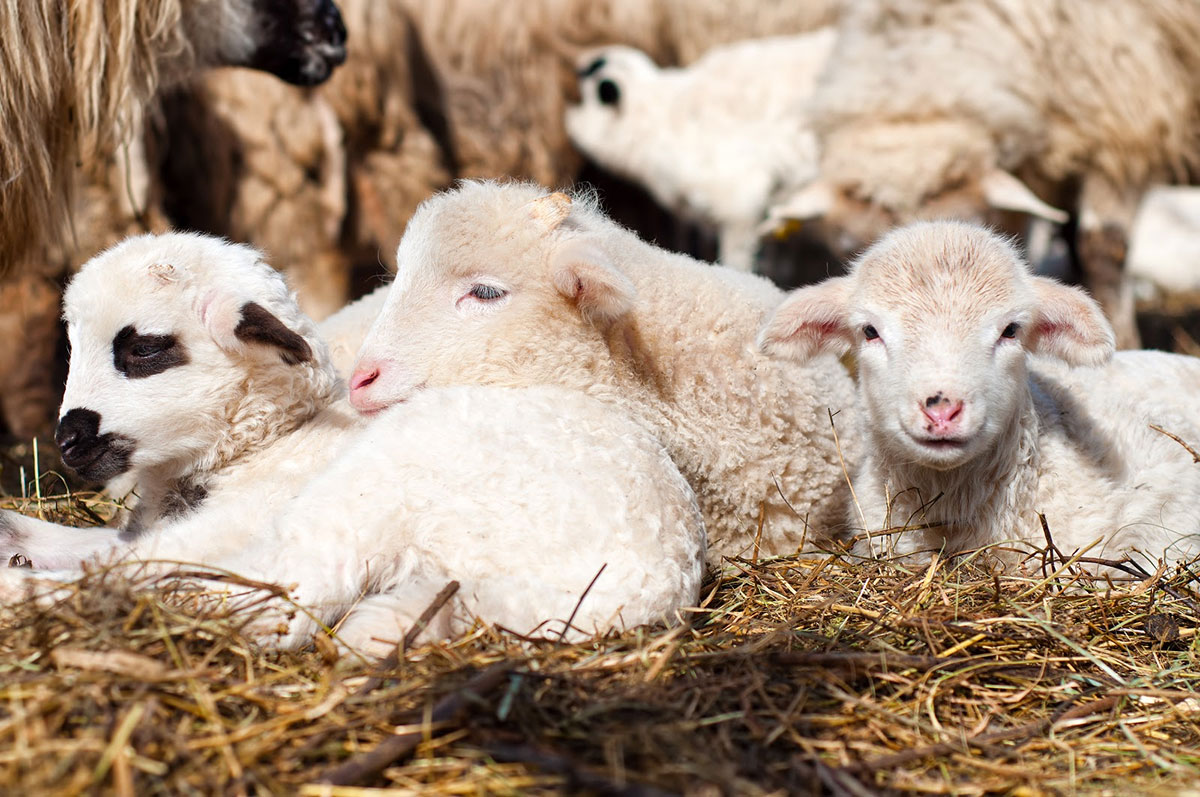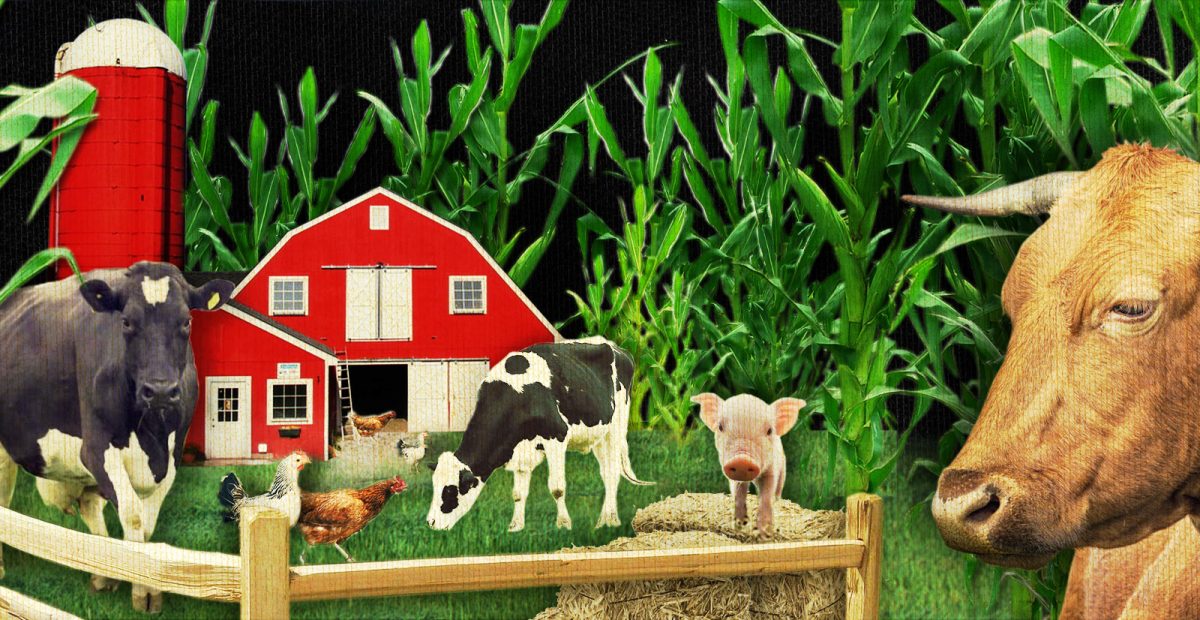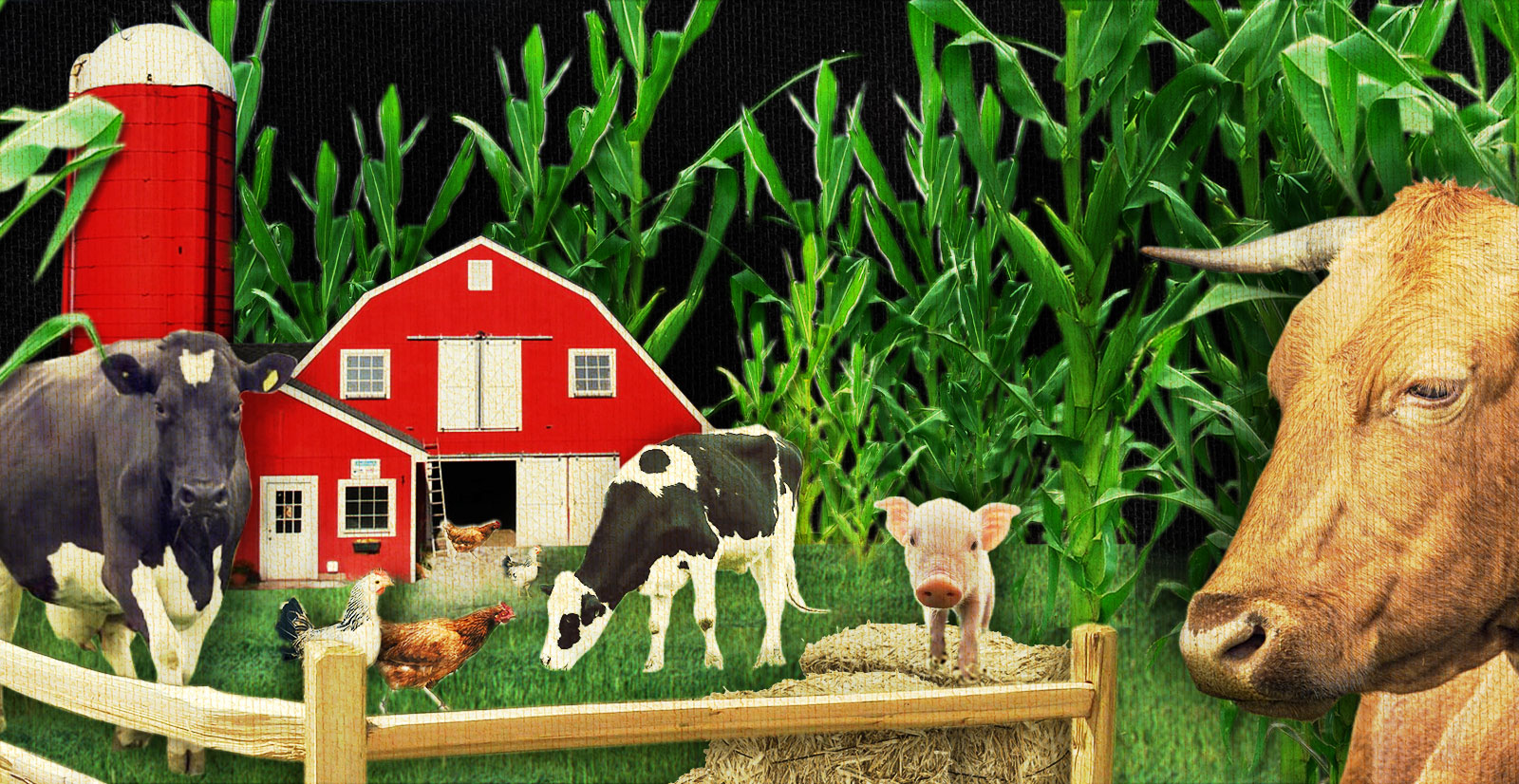
Current Situation
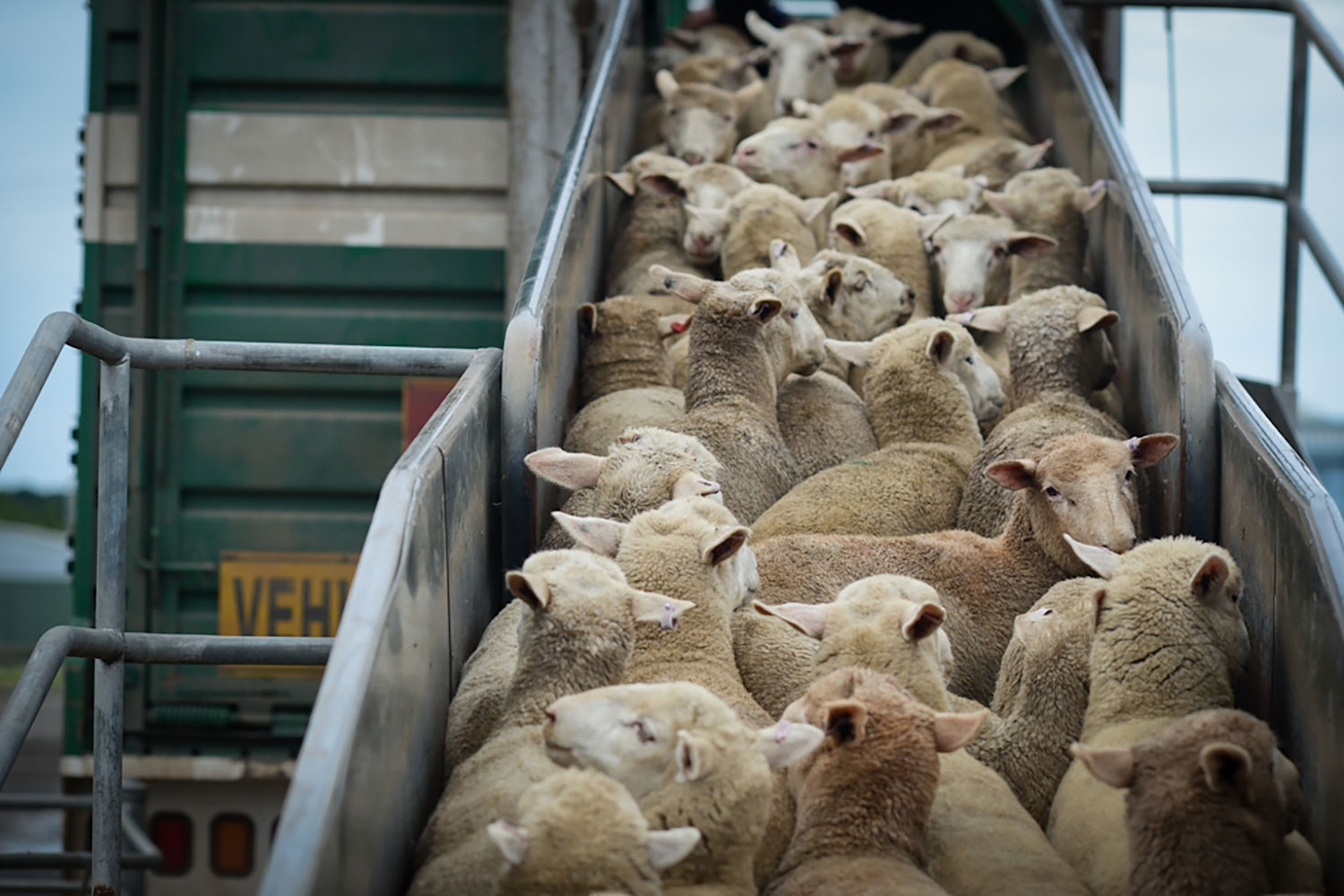
Farm animals today are not raised on the spacious green pastures that were common on family farms of the past. They are raised in extreme confinement at industrial facilities called factory farms. These facilities contain exceptionally large numbers of animals cramped into foul-smelling indoor industrial enclosures. The aim of factory farming is to maximize profits by raising the largest amount of animals in the smallest space possible at the lowest cost feasible.
Factory farming inflicts more suffering on animals than any other industry in the world. In addition to confining animals in spaces where they can hardly move, these facilities lack all the normal stimulation animals would otherwise experience in a natural outdoor living environment. Moreover, undercover video footage taken at factory farms has revealed an industry-wide accepted culture of abusive behavior towards the animals by the farm employees.
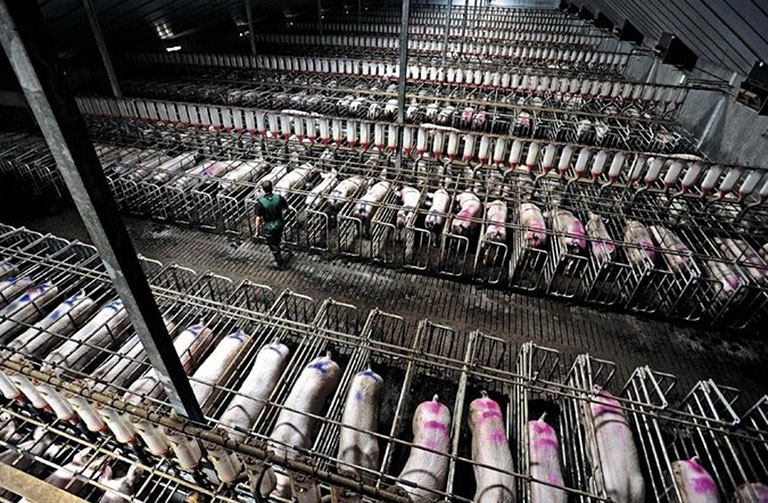
Factory farming inflicts more suffering on animals than any other industry in the world
Unfortunately, most people do not know about the conditions on factory farms. Corporate agribusiness companies keep the reality of factory farms far from the public eye by marketing their animal food products with misleading packaging that shows happy animals lounging under the sun on lush, green farm pastures. They produce television commercials showing talking animals promoting bacon, steak, and dairy products. For these wealthy agribusiness corporations, keeping what really happens behind the closed gates of the factory farms is of the utmost importance because it allows them to make billions of dollars every year.
Conditions on Factory Farms

Factory farms are dens of profound animal abuse created to maximize corporate profits at the expense of the environment, rural communities, and human health. The animals on factory farms are bred to grow unnaturally large and fast and are fed unhealthy amounts of antibiotics for the purpose of maximizing meat, egg, and milk production. The animal’s bodies cannot support this unnatural growth, which often results in painful conditions and deformities. The extreme confinement and the unsanitary conditions on factory farms require the use of additional antibiotics to inhibit the spread of disease, which is commonplace.
Pig Factory Farms
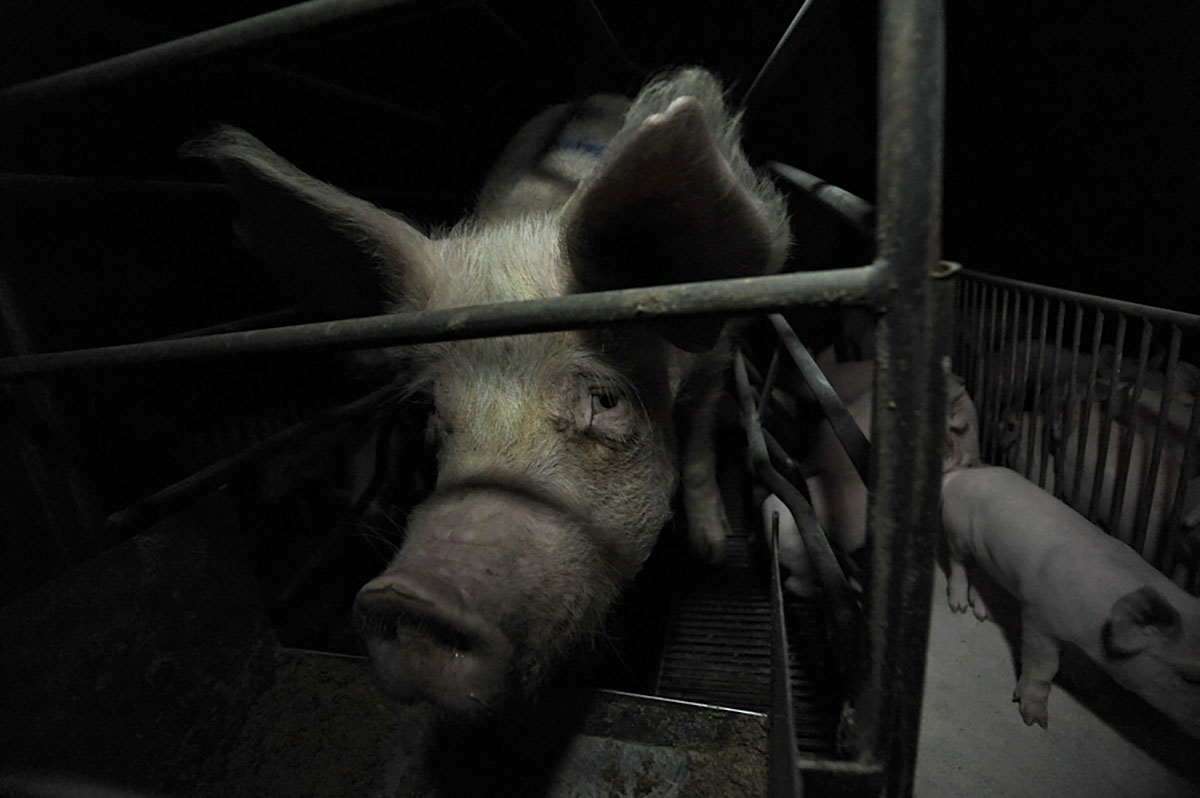
Life for pigs on factory farms is a living hell. Each year in the US approximately 120 million pigs are killed for food, with the overwhelming majority of them raised indoors on factory farms. They are kept in intensively cramped and overcrowded conditions, and many never experience fresh air and sunlight until the last days of their lives when they are transported to slaughter. Female pigs or “sows” are artificially inseminated repeatedly, and often moved when pregnant to gestation crates, where they can barely move. These tiny crates are banned in nine states, and are extremely inhumane. They contain no bedding materials, and are usually floored with slatted plastic, concrete or metal to allow their waste to fall below. Several days before giving birth they are moved to farrowing crates, which are only slightly larger so they can lay down.
Their babies are born into a world of unimaginable cruelty. Their teeth are clipped(so they don’t damage their mothers teats or injure their siblings) within days of their birth, often leading to injuries, inflammation and abscesses. They are then subjected to tail docking, which is the cutting off of the ends of their sensitive tails, to prevent tail biting of other pigs. This behavior is common as the pigs are bored and stressed in the packed overcrowded enclosures. Tail docking is extremely painful and often leads to infections. Soon after they are subjected to ear notching(for identification purposes), and male piglets are castrated within 14 days. This is done to prevent ‘boar taint, which is the undesirable smell and odor of uncastrated male pig meat. It is also done to reduce aggression. It is important to note that all of these procedures are routinely done without any anesthesia or pain relief, and that they often lead to injury and infections.
Sick and injured piglets, as well as the runts of the litter that are smaller and will not generate significant profit, are killed. They are most commonly killed by PAC (Pounding Against Concrete) a practice that is as horrible as it sounds. It literally means holding a baby piglet by the hind legs and smashing it against the concrete floor to kill it. This causes massive head trauma, and results in death, although it’s not always instantaneous. Furthermore it is done right in front of the mother and siblings. Shockingly this practice is so commonplace that it is one of the suggested euthanasia methods listed by the USDA (United States Department of Agriculture) for piglets.
It literally means holding a baby piglet by the hind legs and smashing it against the concrete floor to kill it
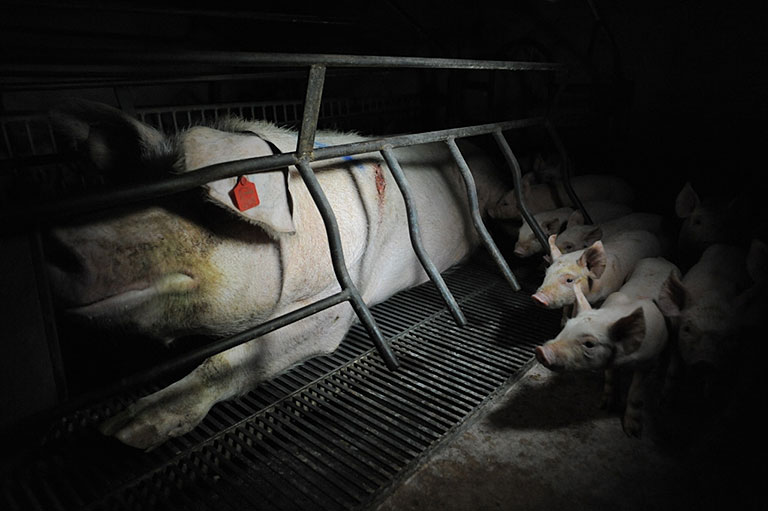

On the USDA official government website – AVMA Guidelines for Euthanasia of Animals:2020 Edition
Under M3.4 “Manually Applied Blunt Force Trauma To The Head”, they do recommend using other methods, but list the below as advantages and disadvantages to this heinous form of euthanasia.
Advantages—(1) Blunt force trauma applied manually to the head is inexpensive and effective when performed correctly. (2) Blunt force trauma does not chemically contaminate tissues.
Disadvantages—(1) Manually applied blunt force trauma is displeasing for personnel who have to perform it. (2) Repeatedly performing manually applied blunt force trauma can result in personnel fatigue, loss of efficacy, and humane concerns. (3) Trauma to the cranium can damage tissues and interfere with diagnosis of brain diseases.
While the entire list of advantages and disadvantages is shocking, what stands out is the first disadvantage, that it is “displeasing for personnel who have to perform it”. There is absolutely no regard for these animals as feeling sentient beings.
As they get older they are pumped with hormones to make them grow faster, and antibiotics, as the farms are rife with disease. The crowded, unsanitary conditions and elevated level of ammonia from the urine and excrement make for an environment prone to bacteria, viruses, and other airborne illnesses. Furthermore they exhibit many behavioral problems as a result of stress and extreme confinement.
Pigs on factory farms are born into a dark world with unimaginable pain and suffering inflicted upon them throughout their short lives. The procedures they endure are traumatic and frightening. They are taught to fear humans from the day they are born, and never see the light of day until they are slaughtered.
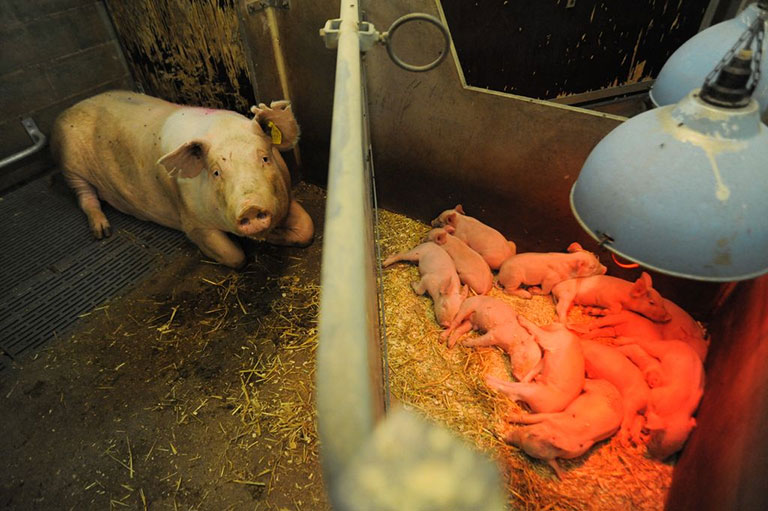
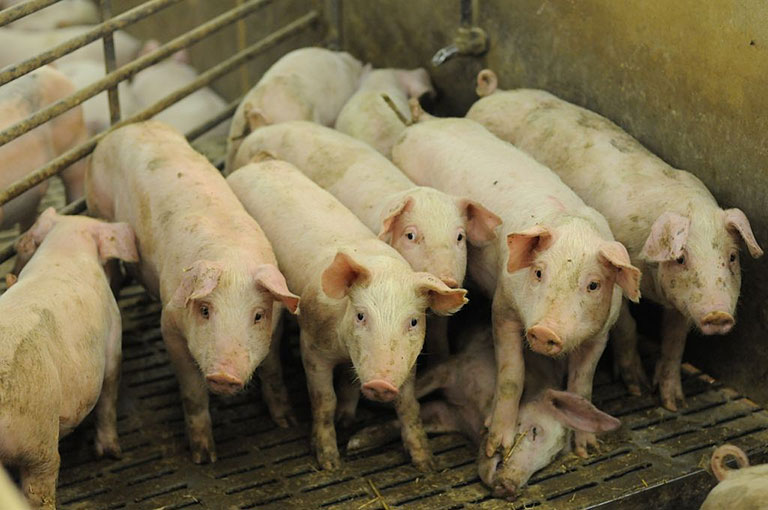
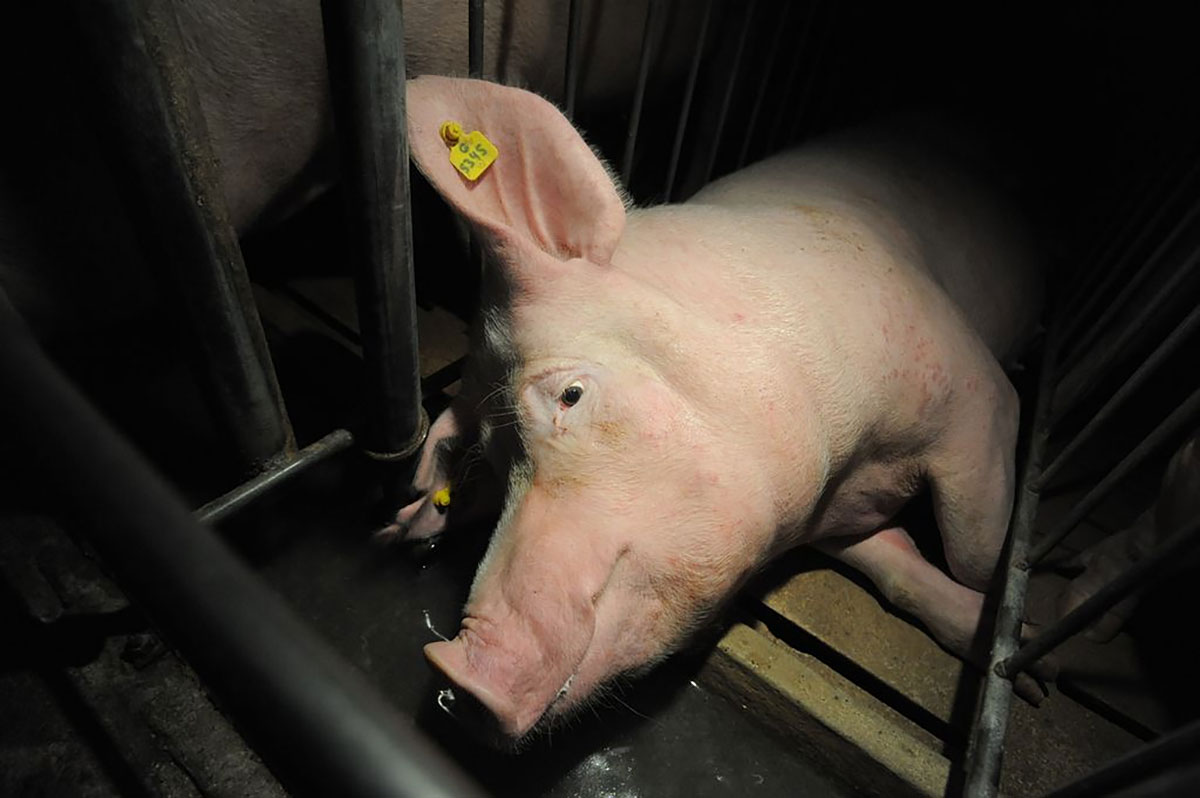
The Dairy Industry is the Veal Industry
Many people don’t realize that veal production is a direct product of the dairy industry. Every time a person eats a slice of cheese or drinks a glass of milk, he is supporting the veal industry. Like humans and other mammals, cows only produce milk as a result of being pregnant and giving birth. Their milk is meant for their calves just as human milk is meant for human babies. Because male calves will never produce milk, millions of them every year are sold to the beef industry days after birth and raised in tiny enclosed stalls for veal. Horribly abused, veal calves are often forced to wear heavy chains to inhibit them from becoming overactive in the stalls in order to keep their meat tender. They are kept in near total darkness to keep their flesh pale. Many stalls are so small the calves can’t move their heads or turn around to prevent them from building muscle. When taken to the slaughterhouse, some calves aren’t even able stand up or walk to the truck because their muscles are so weak and underdeveloped. Instead, they are often dragged to the transport trucks.
To keep the milk flowing in dairy cows, factory farm personnel artificially inseminate them once a year. When a calf is born, he or she is removed from the mother within a day or two to make the mother’s milk available for human collection and consumption. Just as it is with a human mother, a cow’s natural urge is to be with her child after birth, to nurture and love. To deny this bond is to deny one of the strongest bonds in all of nature. It is common for cows in dairy factory farms to moan and cry incessantly for weeks after their calf has been taken away.
When a calf is born, he or she is removed from the mother within a day or two to make the mother’s milk available for human collection and consumption
Many dairy cows are kept indoors, where they are forced to stand on hard, concrete surfaces, which contributes to inflamed feet and hooves. This makes it extremely painful for them to walk. The unnaturally elevated levels of milk in their mammary glands often leads to mastitis, a painful infection that causes a cow’s udder to swell. Without any form of painkillers, dairy cows on factory farms often have a large portion of their tails surgically removed and have their horns cut or burned off to keep them from injuring other cows due to the depression and stress they experience on a daily basis. Dairy cows can live up to 20 years but never live that long on a factory farm. On average, they are slaughtered at four years of age, when many begin to develop illnesses, and their milk production begins to slow.
Unbelievably, the dairy industry actually kills perfectly healthy, young cows to keep the price of milk as high as possible. In 2016, Cooperatives Working Together, or CWT, (an association of 28 milk producing cooperatives that produce over 70% of the US milk supply, with members including Land O’Lakes, DairyLea, National Milk Producers Federation, and Prairie Farms) paid American consumers $52 million to settle a class-action lawsuit. It had been discovered by Animal Outlook that from 2003-10, CWT was responsible for the slaughter of half a million perfectly healthy, young cows in order to reduce the nation’s milk supply by approximately 10 billion pounds. This massive reduction resulted in the price of milk more than doubling.
Other dairy cows, who have had their calves taken away, watch as the new mother cleans her baby.
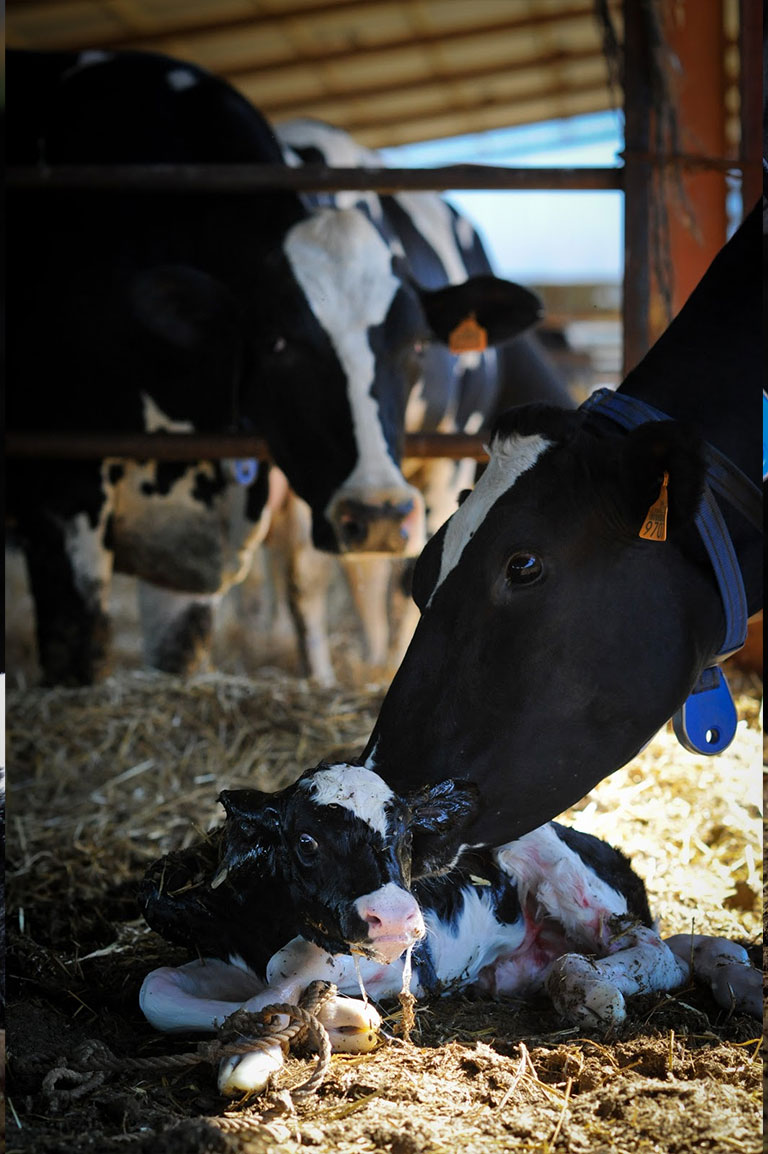
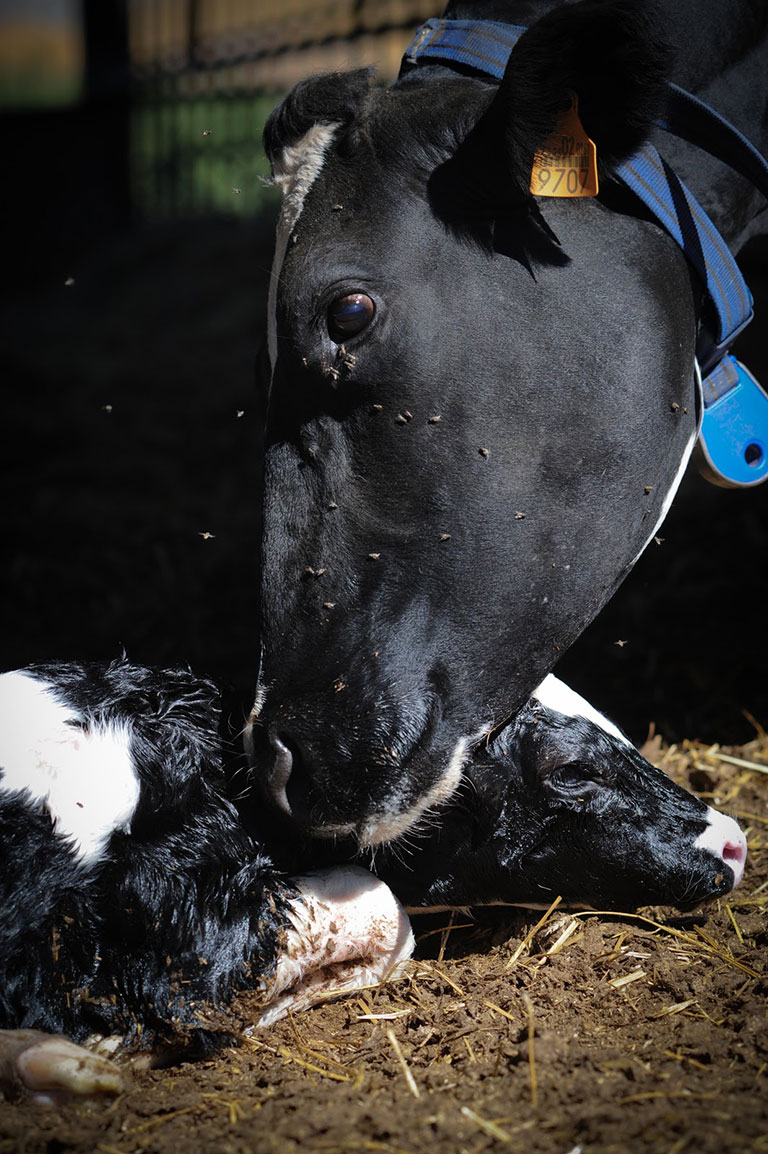
As the calf takes her first steps, the cows watch the humans warily.
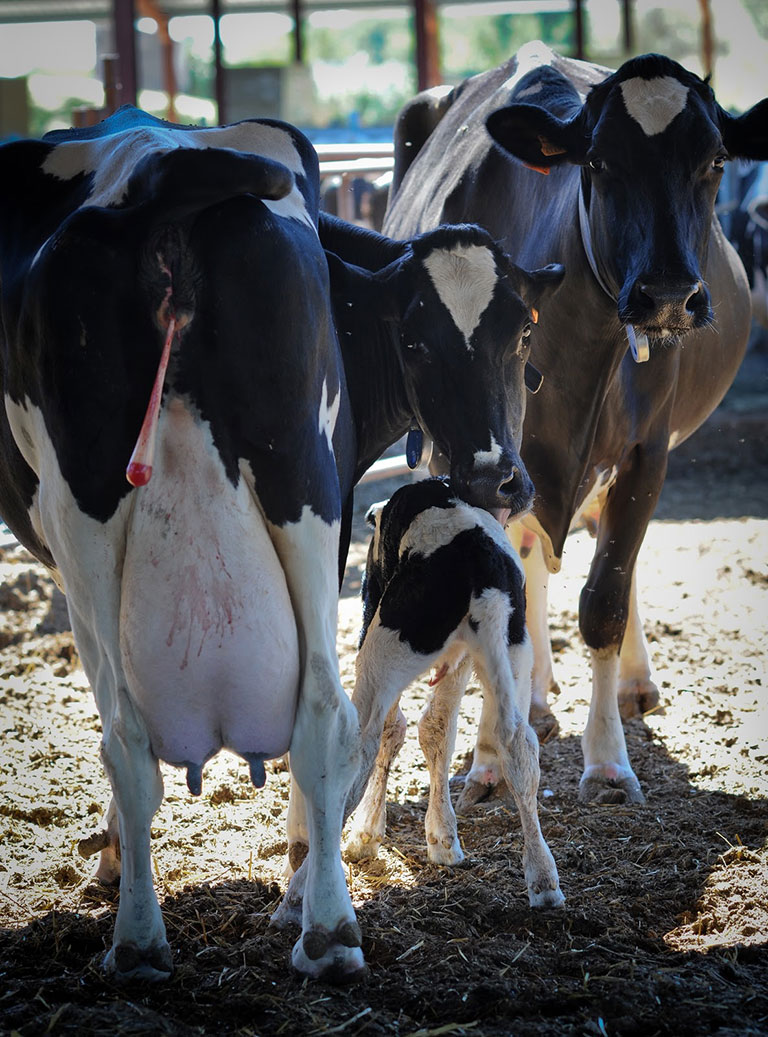
The calf is dumped in a wheelbarrow and taken to her home, a veal crate.
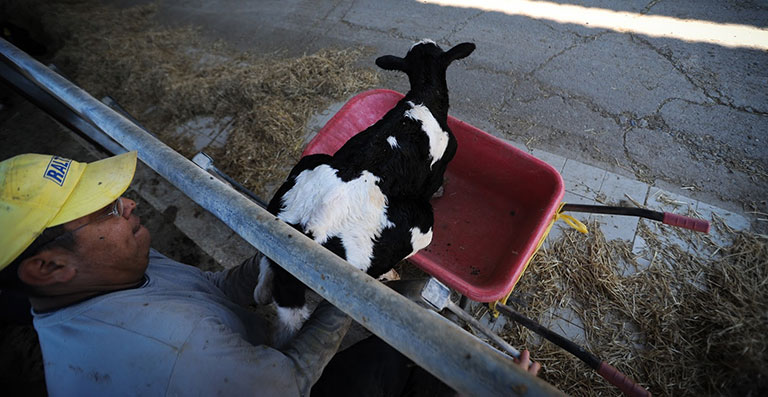
Still wet from birth, she will be added to the other rows of other calves and crates, and raised in this confinement.
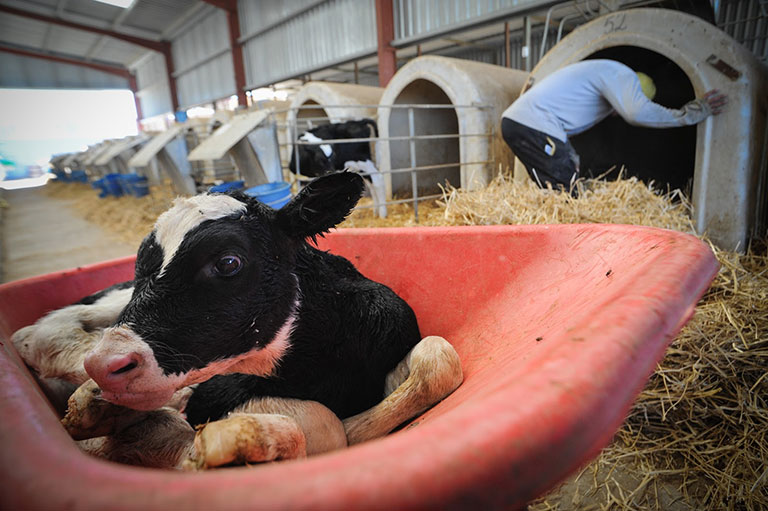
These young calves will either be raised for veal or put in the milk production system. Both outcomes involve lives of exploitation and a premature death.
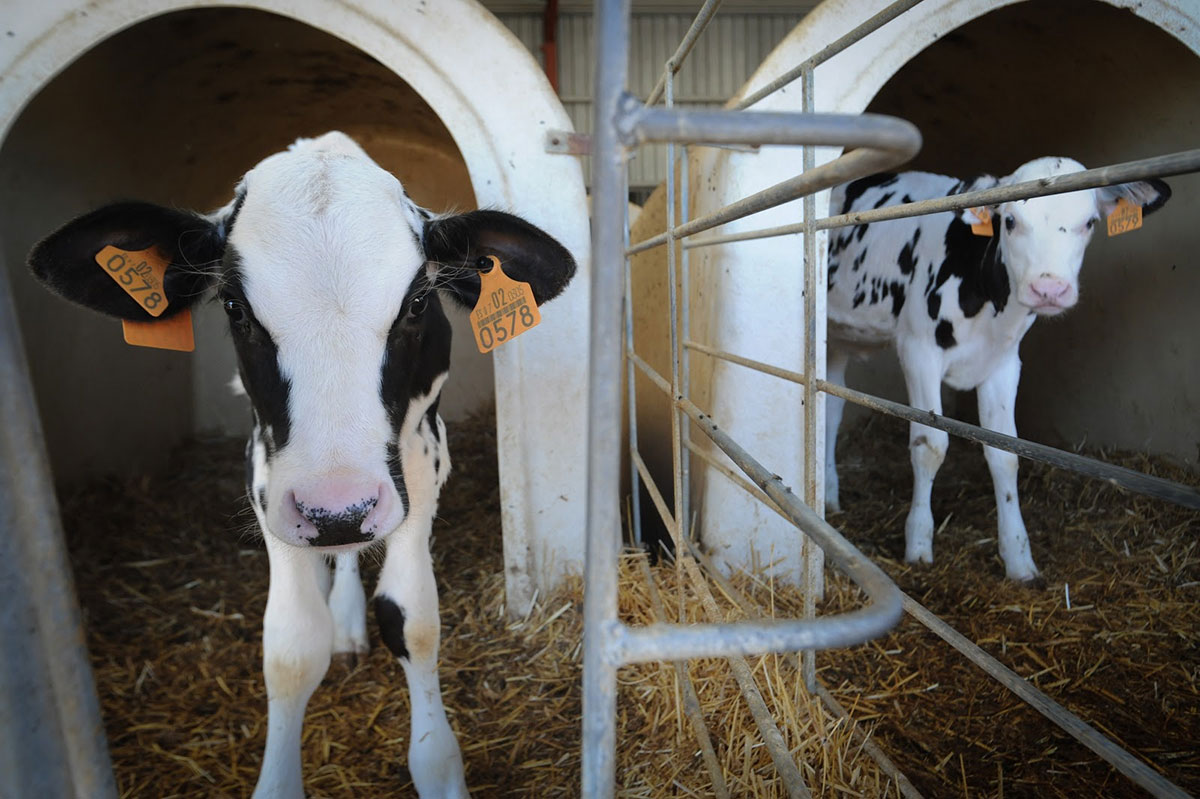
A lonely existence.
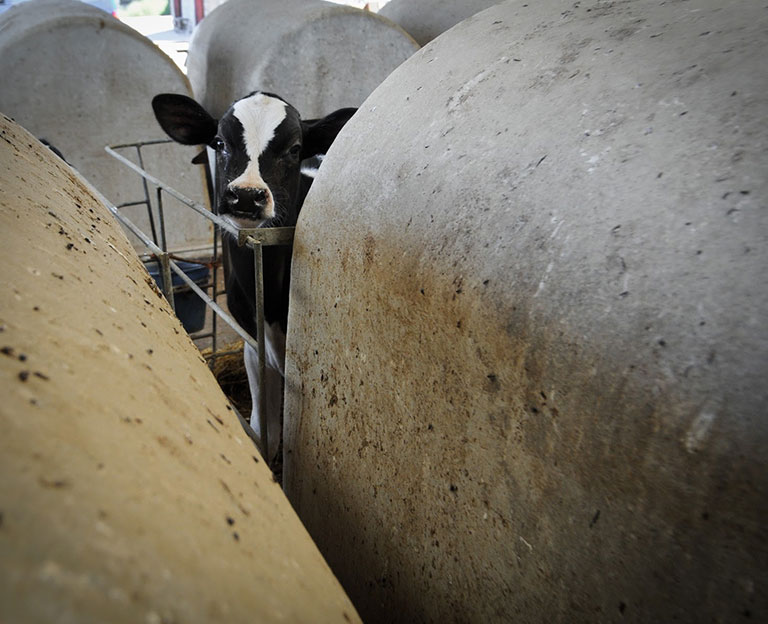
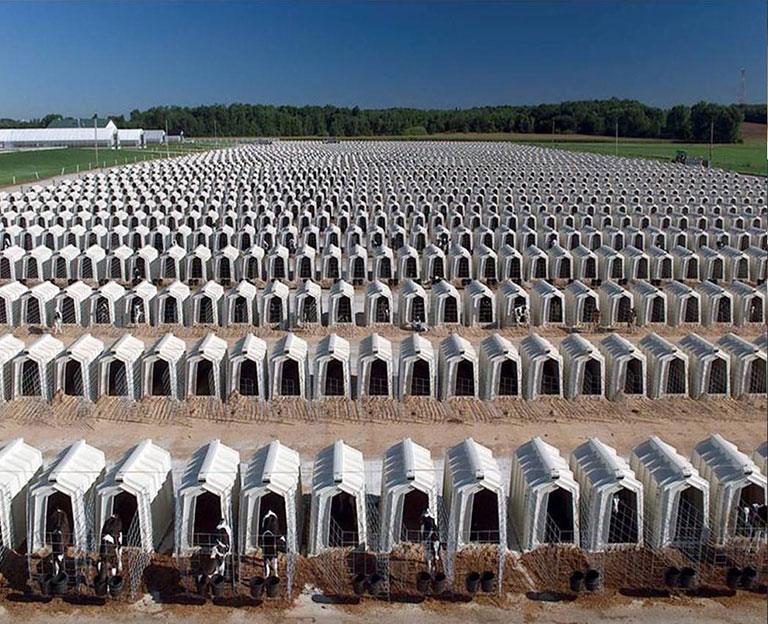
shocking animal abuse
Warning: Graphic footage. A Mercy for Animals undercover video reveals shocking animal abuse at a major American pizza cheese supplier. Countless other videos have shown the same treatment of cows on factory farms worldwide.
Egg Production Farms
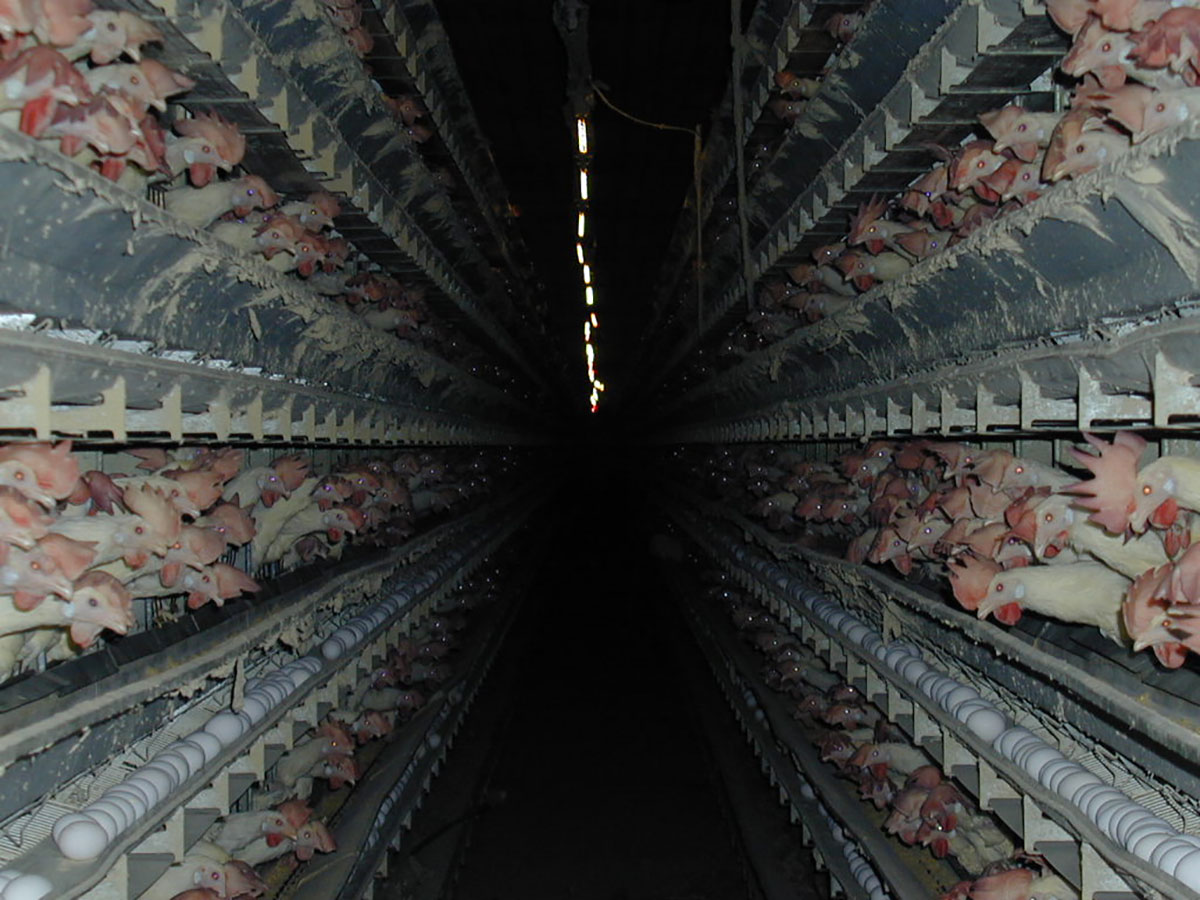
Hens used for egg production and raised for meat are horrifically abused their entire lives. Chickens are very sociable animals who like to forage for food, take dust-baths, lie in the sun, perch in trees, nest, and take care of their families. They suffer greatly when unable to exhibit the range of behaviors that come naturally to them. Because male chickens (roosters) born in egg production hatcheries don’t lay eggs and are not used in the meat industry (genetically modified ‘broiler’ chickens are used for chicken meat), they are killed the day they are born. Within hours of their birth, they are ground up, electrocuted, or gassed to death. Over 250 million male chicks are killed in the United States every year. The female chicks, on the other hand, spend their entire lives in tiny wire ‘battery’ cages, never once stepping outside or feeling the earth beneath their feet. Even ‘free-range’ chickens are often kept inside massive crowded sheds without ever going outside.
Even ‘free-range’ chickens are often kept inside massive crowded sheds without ever going outside
Battery cages commonly hold 5–10 chickens, each hen given the equivalent of less than an 8 ½ x 11-inch encaged area to live her entire life in. The lack of stimulation and cramped conditions of the cages create tension and stress between the hens, so they are debeaked at a young age before entering the cage. A portion of their beaks is seared off with a burning hot blade so they will not injure the other hens or themselves. The hens live their entire lives standing on a wire floor and rubbing against the cage, causing severe feather loss and debilitating bruises and abrasions. Because the cages are organized in rows placed on top of one another, the waste of the chickens continually falls on the chickens below. The facilities are filled with the putrid smell of urine and excrement. Despite her natural life-span being ten years or more, as soon as a hen’s egg-laying output begins to decrease, she is killed. This normally happens between one or two years of age.
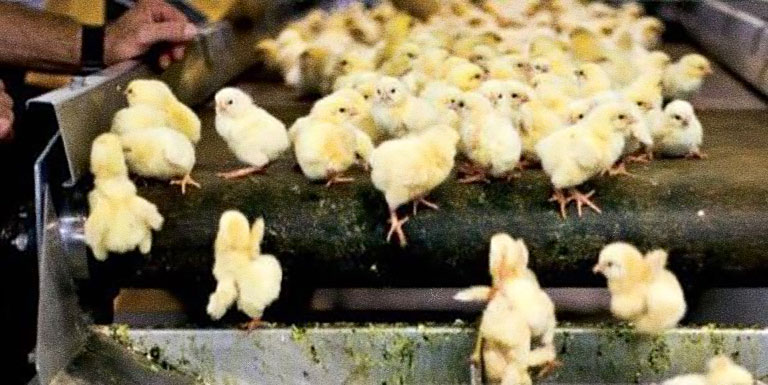
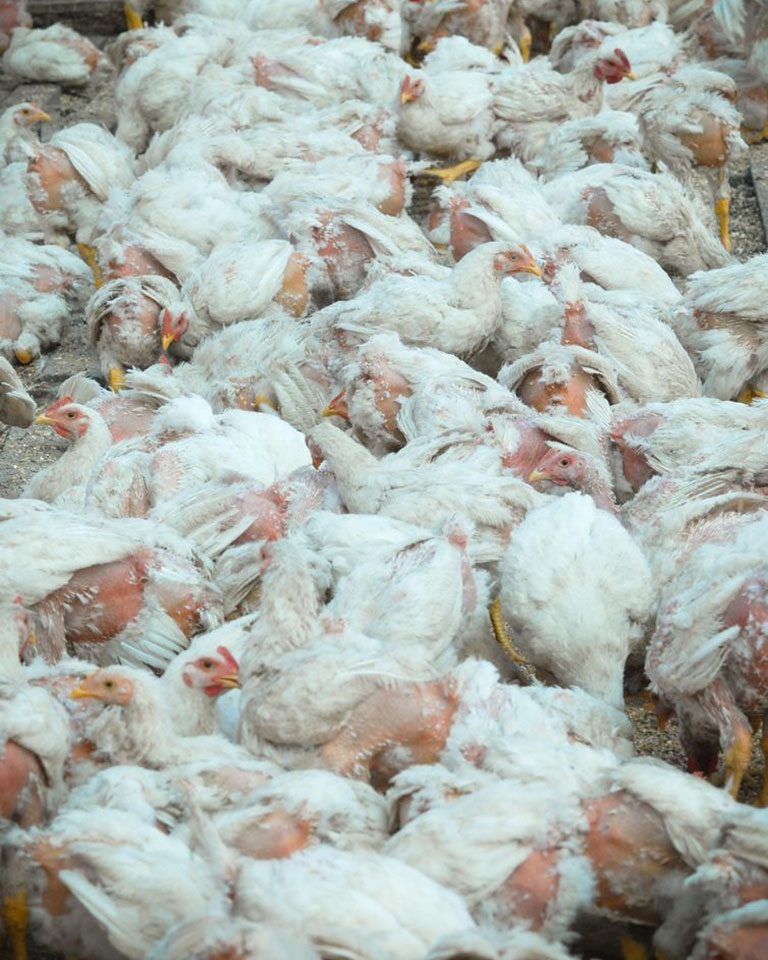
Broiler Farms
Each year, factory farms in the United States raise and kill approximately 9.5 billion chickens for meat. Almost all meat chickens, called broilers, are raised on factory farms, where they are housed in large sheds of 20,000 chickens or more. The chickens live crammed together on the shed floor in their own waste where the high ammonia levels irritate and burn their eyes, throats and skin.
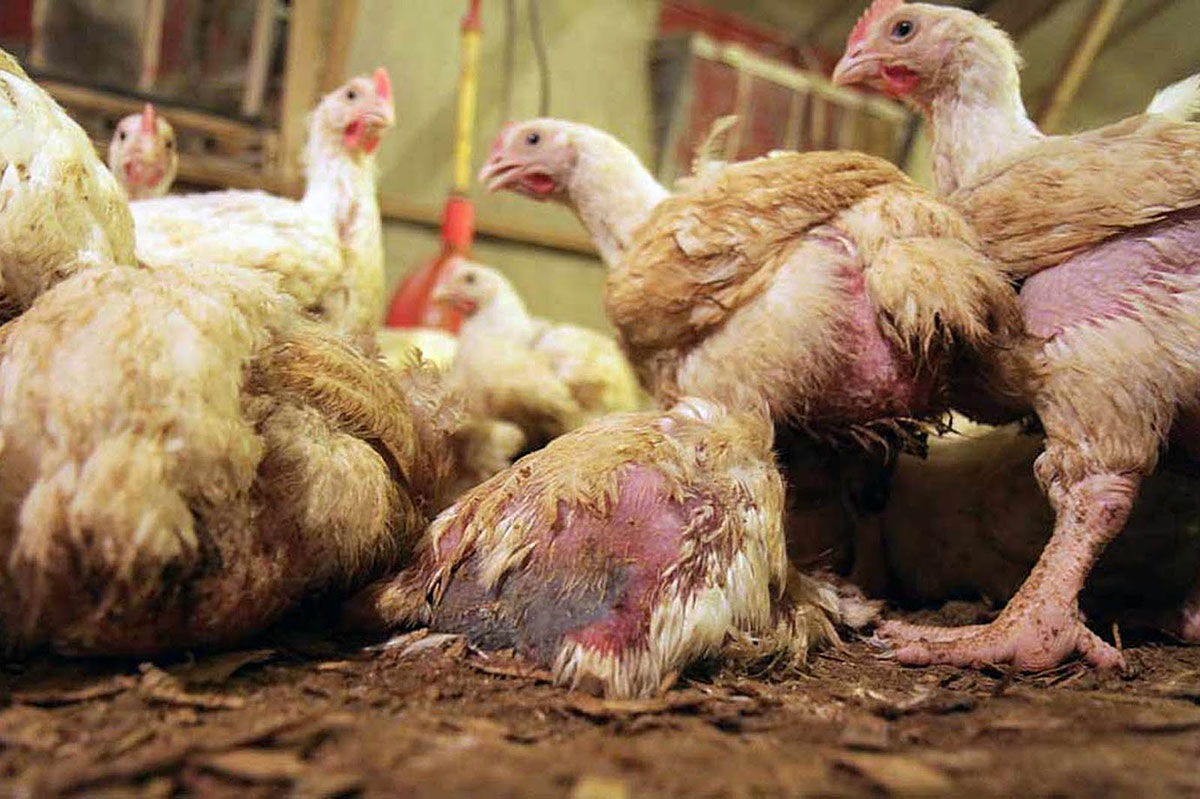
Chickens were being painfully beaten, stabbed, and impaled by workers using makeshift clubs spiked with nails
Factory-farmed broilers grow unnaturally fast and disproportionately large due to genetic modification, excessive feeding, and inadequate exercise. They look very little like their chicken ancestors from just a couple of hundred years ago. Their breasts grow abnormally large while their skeletons and other organs lag behind. Most have trouble breathing while many others suffer heart failure, leg weakness and chronic pain. Many cannot support their own weight, and their legs break under the weight of their bodies. They become crippled and are unable to reach food and water.
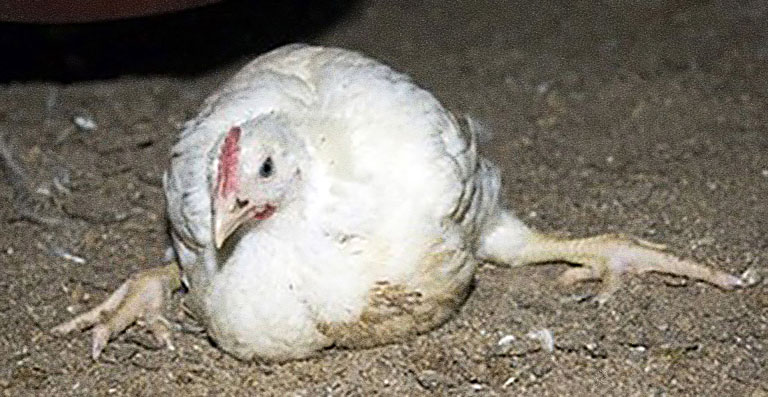
Beef Cattle Factory Farms
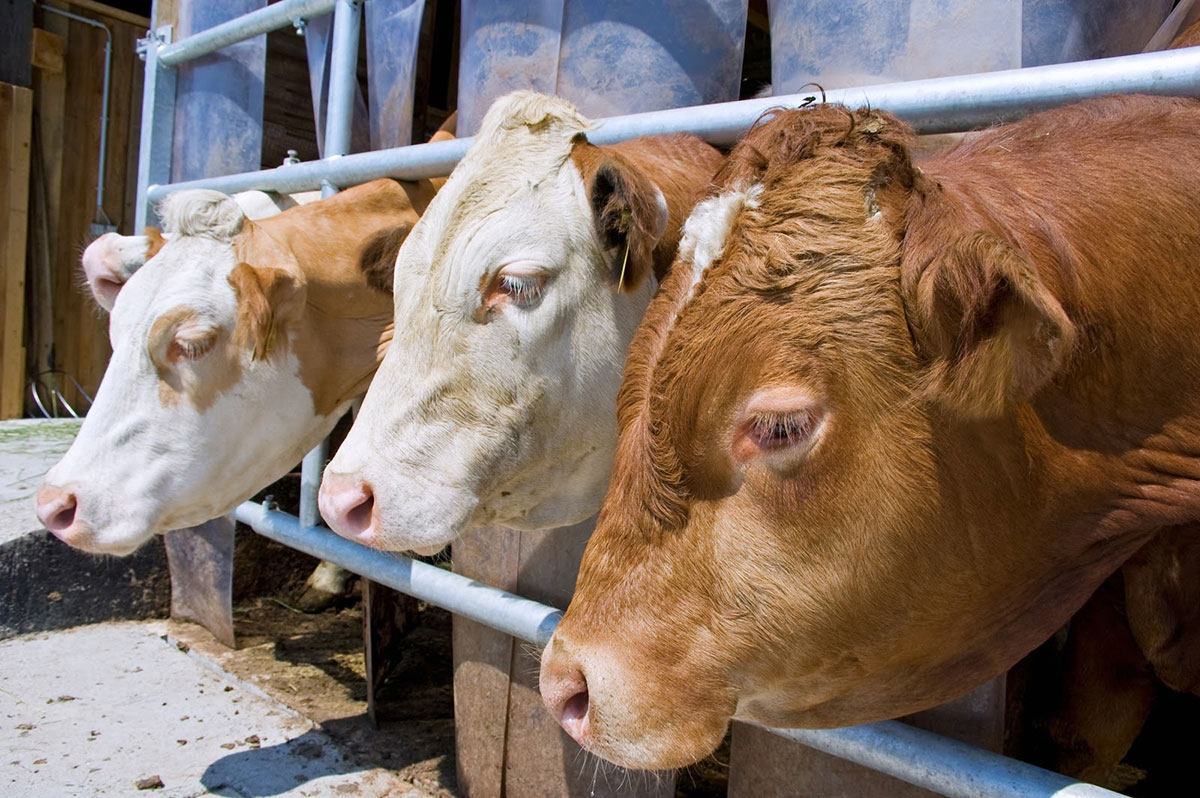
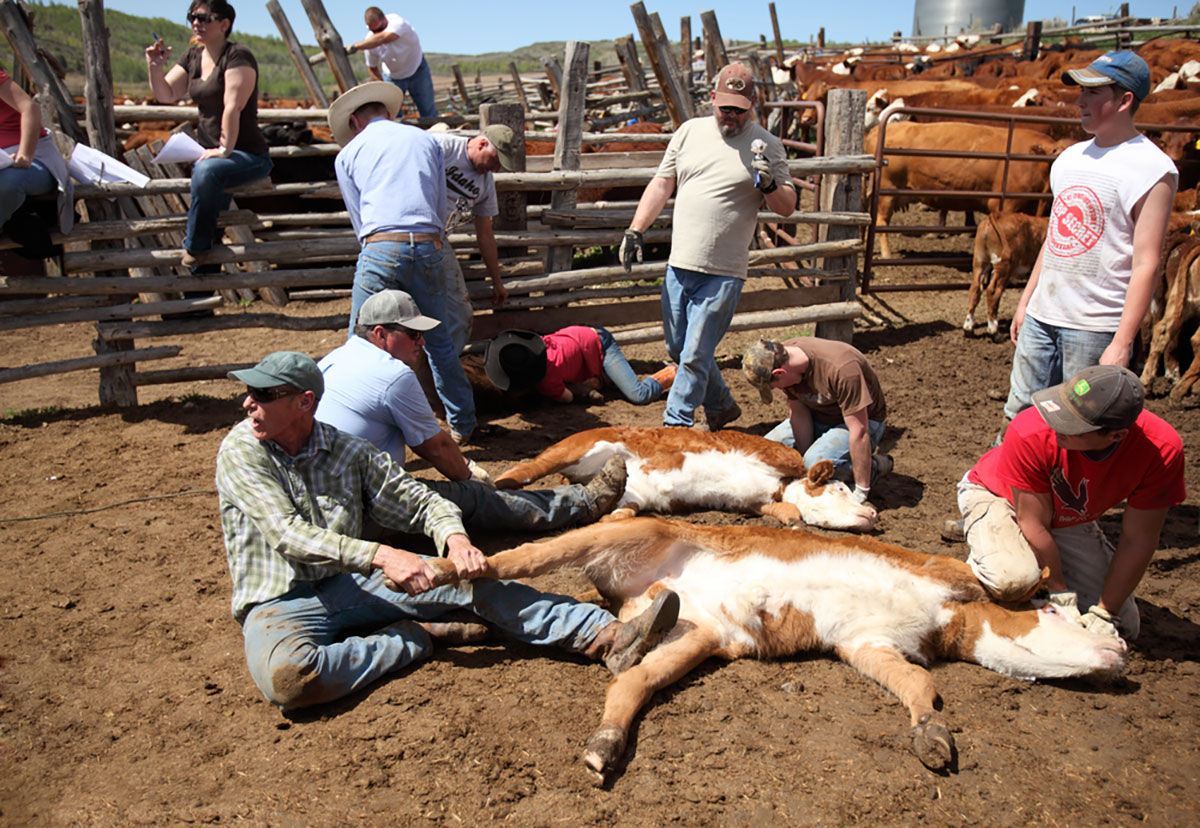
Cattle raised by the beef industry on factory farms live very stressful, difficult lives, enduring all types of extreme weather conditions. The majority of their time is spent in their own waste on muddy feedlots without pasture or shelter, one of thousands packed in a cramped enclosure. Each year, approximately 39 million cattle are slaughtered for beef in the United States.
It is common for young calves to develop acute throat irritation resulting from repeated crying for their mothers
Calves are usually separated from their mothers a couple of weeks after birth. It is common for young calves to develop acute throat irritation resulting from repeated crying for their mothers. After this separation, they have to endure a number of painful mutilations, including dehorning, castration, and branding. Even though these procedures are known to produce fear and pain in the calves, anesthesia is rarely provided. Male calves are castrated at a young age because it is thought it improves the meat quality and tenderness. Methods include removing testicles surgically with a scalpel, crushing spermatic cords with a clamp, and constricting blood flow to the scrotum until testicles die and fall off. Each method causes pain that can last for days but painkillers are rarely used.
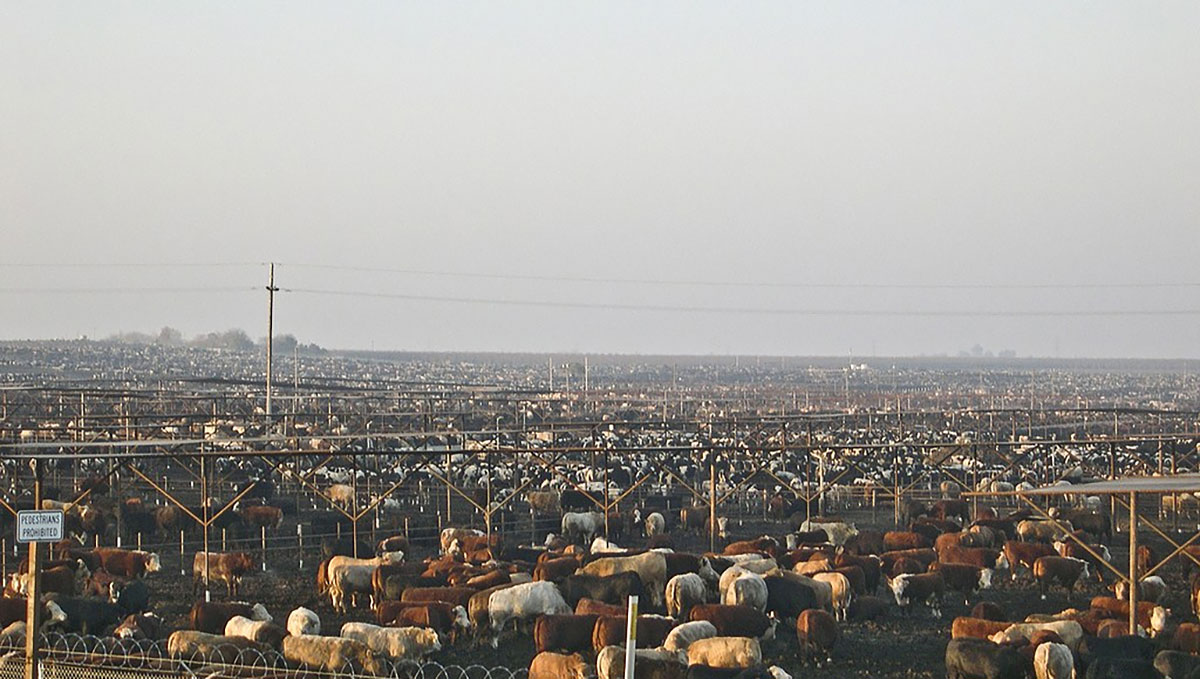
A cow’s natural diet is grass. However, to increase their weight, at the feedlot they are forced to consume an abnormal grain diet that is very hard on their digestive system, causing chronic illness, pain and, occasionally, death. Once they reach “market weight,” cattle in the beef industry are trucked from the feedlot to the slaughterhouse. The Humane Methods of Slaughter Act requires that livestock be rendered insensible to pain before shackling and slaughter. However, investigations have found that some animals are still fully conscious when they are killed. Cattle can live upwards of 25 years, but beef cattle are generally killed for their meat at just two years of age.
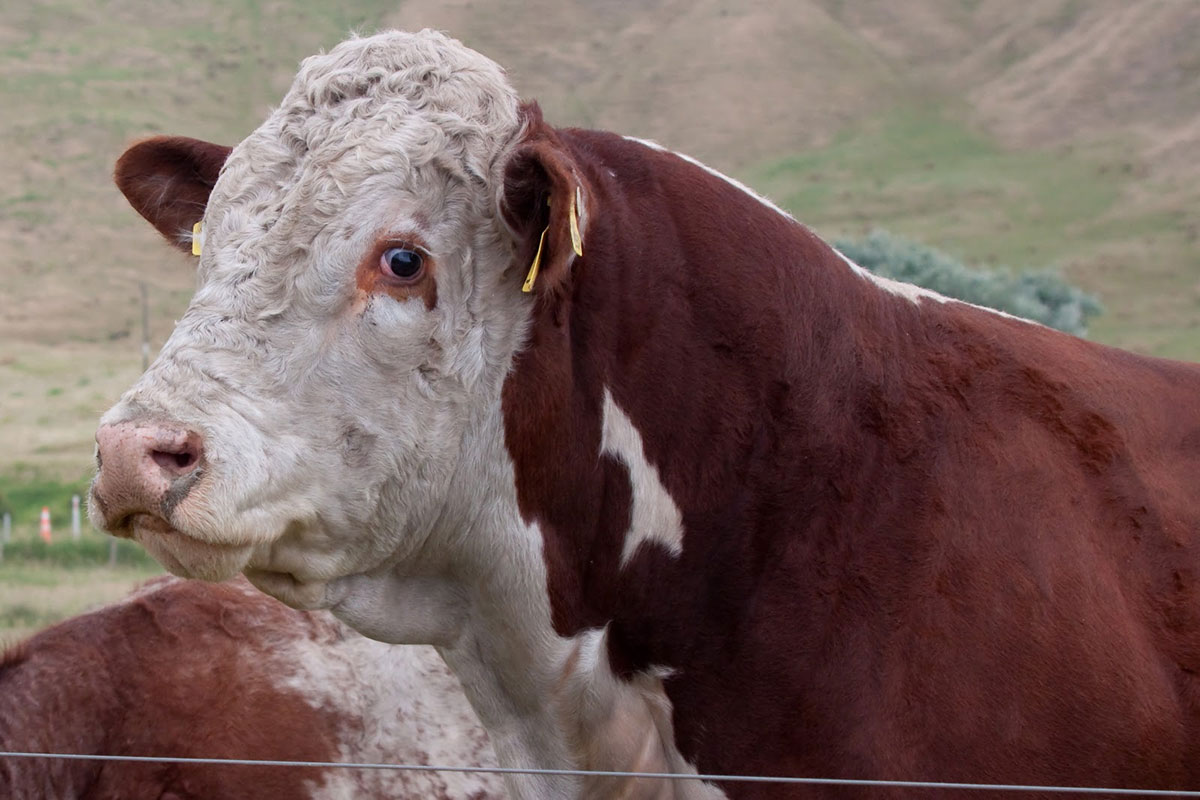
Warning: Graphic footage. This Mercy for Animals video shows footage of a young calf named Emma, one of millions of calves slaughtered each year for meat.
Ag-Gag Laws

Ag-gag laws are anti-whistleblower laws that prohibit people from taking photographs, videos, and sound recordings of animal abuse on factory farms and slaughterhouses. They are designed to prohibit and punish activists who have gone undercover to expose the atrocities that take place on massive industrial animal operations. These laws began to appear in the early 1990’s as a direct response to videos taken and circulated by the Animal Liberation Front, PETA and other animal rights organizations. The videos showed unimaginable cruelty, and shocked the country causing massive public outrage. The animal rights activists risked physical harm by secretly filming these conditions, and released videos and images that played a major role in convincing law enforcement, legislators, and the general public that legal standards protecting farm animals simply weren’t enough. Not only have the films brought to light rampant animal abuse, but they have resulted in numerous animal cruelty convictions.
Ag-gag laws are extremely dangerous, as they make it a crime to expose the horrific treatment these animals experience
Ag-gag laws are extremely dangerous, as they make it a crime to expose the horrific treatment these animals experience. Not only do they hide animal abuse and protect the abusers, but they keep hidden unsafe working conditions for farmers and food safety violations. In addition they limit journalistic freedom, and violate the right to freedom of speech. They also hinder the ability of law enforcement personnel to investigate any kind of wrongdoing in these facilities.
Furthermore much of the increased public awareness of the suffering farm animals endure on factory farms is a direct result of undercover videos. These laws need to be stopped and are dangerous for American citizens. Currently five states, Missouri, North Dakota, Montana, Arkansas and Alabama have ag-gag laws in place, and Iowa has litigation pending. The bills have been defeated in 17 other states, and ruled unconstitutional in five others, but the agriculture lobby is aggressively trying to get these bills passed.
Thanks to organizations like We Animals, Animal Equality, Mercy for Animals, PETA, Animal Outlook, HSUS and many others, new undercover footage is constantly being released. Footage has gone viral on social media and been seen by millions of people. All of this is a nightmare for big agribusiness corporations who now must ensure more humane handling and treatment of animals by their employees, or be subject to unwanted lawsuits, fines, and media attention.
We must do all we can to not allow more of these laws to pass. This industry-wide hidden culture of rampant abuse and mistreatment needs to be shown to the public at all costs.
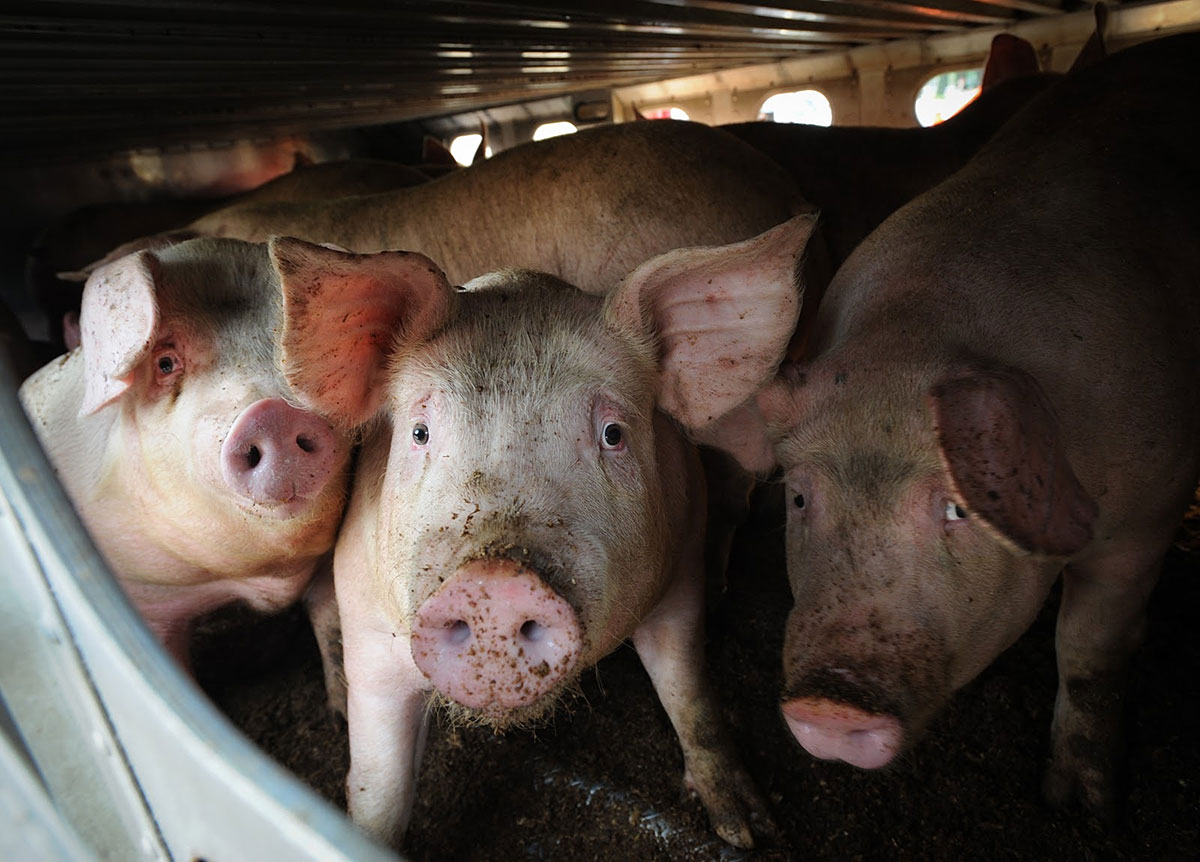
Live Export


Each year, millions of live animals are transported thousands of miles for the purpose of slaughter or breeding. The animals endure long arduous journeys that often take days, weeks or even longer on trucks and/or ships. The journeys are brutal, and often involve long truck rides to ports where they are loaded onto massive ships. Some of the ships can hold up to 75,000 sheep or 20,000 cattle. The animals are live exported to countries that lack a large enough population of a particular farm animal, or to meet the demand for fresh meat. Many animals travel for a month, only to end up having their throats cut by a halal butcher while fully conscious. They are often shipped to countries that have little or no animal welfare regulations.
Aboard the overcrowded ships the animals often don’t have enough space to move or lie down. The ships can be so crowded that the animals cannot make it to the food or water troughs. Many do not eat, drink or sleep regardless, as they are not used to being on moving ships on the rough open ocean, and are extremely confused and disoriented. The temperature ranges the animals must endure on these voyages can be extreme. They are forced to stand in their own urine and feces. As a result they are exposed to high concentrations of ammonia gas, which irritates their eyes, nasal cavities and respiratory tracts. Thousands of animals typically die on these trips, and many are seriously injured. These ships can easily spread disease, as they are transporting animals in unsanitary conditions across the globe.
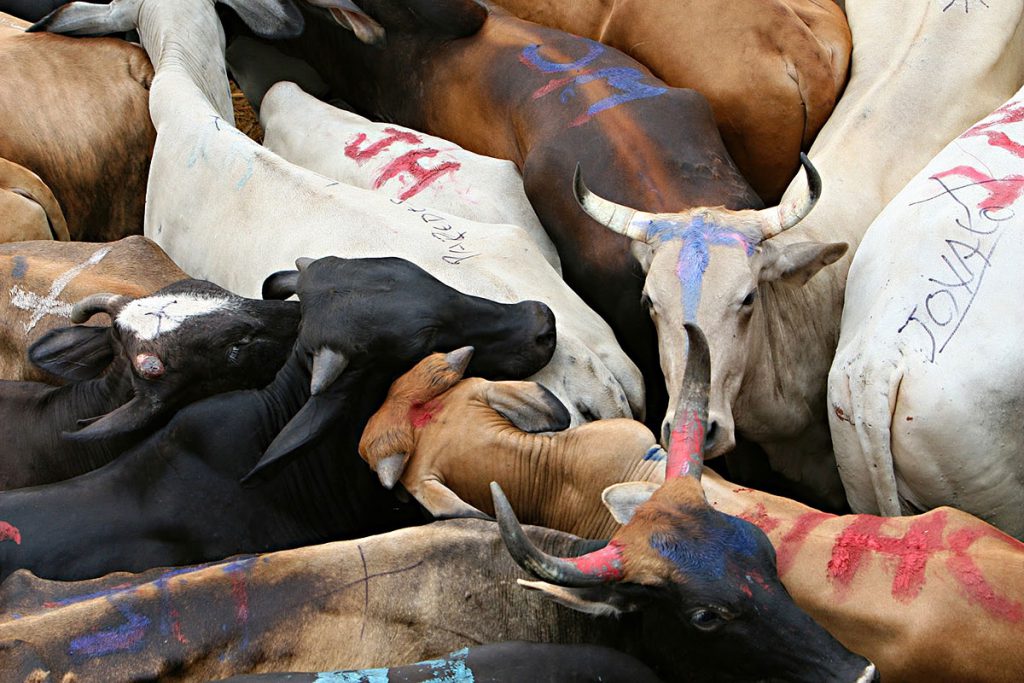
Legal protections for these animals are very limited, and many are subjected to horrific abuse both during transport and at the time of slaughter. The World Organization for Animal Health (OIE) is the agency that is responsible for setting standards and rules for import and export, but there is virtually no enforcement and violators are rarely held accountable. Upon arriving at their destination there is a continued lack of oversight. Inhumane slaughter is a huge issue as many countries use indescribably horrific methods, often while the animals are fully conscious.
The World Organization for Animal Health (OIE) is the agency that is responsible for setting standards and rules for import and export, but there is virtually no enforcement and violators are rarely held accountable.
There have also been many accidents with tragic results. In August 1996 a ship on route from Australia to Jordan caught fire and was abandoned before disappearing into the Indian Ocean. The fire killed 67,488 sheep, who either burned or drowned. In November of 2019, the Queen Hind capsized in the Romanian port of Midia, shortly after sailing out on route to Saudi Arabia. The half sunken boat trapped and killed over 14,000 sheep. Only 180 survived the disaster. In September of 2020, the massive cargo ship, Gulf Livestock 1, overturned off the coast of Japan during powerful typhoon and has still not been recovered. All 5,800 cattle on board died, as well as approximately 40 crew members.
Despite all of this the live export industry is exploding. It has quadrupled in size in the last 50 years, with millions of pigs, sheep, cattle, goats, poultry, alpacas, horses and camels being shipped around the world each year. The animals in the live export trade usually originate from factory farms in North and South America, Australia and Europe and then shipped to countries in the Middle East, North Africa and Asia. The import market in the Middle East is booming, due in part to increased demand, and water shortages that limit local production. Denmark, the Netherlands, Canada and Germany are the biggest exporters of live pigs. Australia, France, Mexico and Canada are the largest exporters of live cattle. Sudan, Romania, Somalia and Australia are the biggest exporters of live sheep. Interestingly the United States is the single largest importer of animals in the world, with the vast majority made up of pigs from Canada or cattle from Mexico.
Live export is dangerous, inhumane and cruel. It must be banned.
Environmental Impact of Factory Farms

Factory farms put an incredible strain on the world’s natural resources. They produce staggering quantities of waste and greenhouse gases which pollute our land, air, and water. Despite this, hardly any air pollution laws concerning intensive animal factory farming exist.
In the U.S. alone, animals raised on factory farms generate more than one million tons of manure per day. This is three times the amount generated by the country’s human population. Factory farms typically store animal waste in huge, open-air lagoons as big as several soccer fields, which often leak and spill. In 2011, an Illinois hog farm spilled 200,000 gallons of manure into a creek, killing over 110,000 fish and negatively impacting the regional ecosystem. Hundreds of other lagoon spills have been documented that have polluted municipal drinking water supplies and natural waterways. Yet despite this, corporate agribusiness companies have largely escaped responsibility for water pollution due to loopholes in the few animal farm water waste regulations that do exist. Between watering the crops that farm animals eat, providing water for them to drink, and cleaning the filth in factory farms, transport trucks, and slaughterhouses, the animal agriculture industry uses about 1,581 gallons of water to produce one pound of beef. This is roughly the equivalent of 100 showers. The meat and dairy industries alone account for nearly 50% of California’s water consumption.
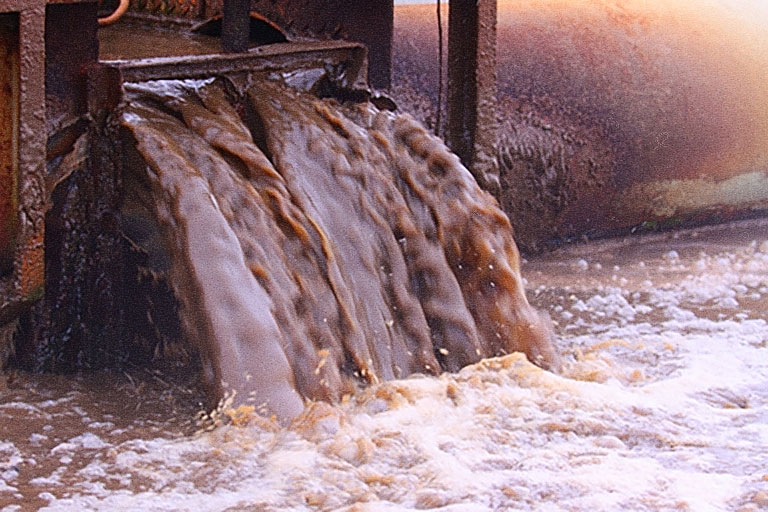
In the U.S. alone, animals raised on factory farms generate more than 1 million tons of manure per day
Furthermore, the demand for livestock pasture is the major cause of deforestation. During the past 40 years, close to 20 percent of the Amazon rainforest has been cut down to make way for cattle ranches

Positive Change
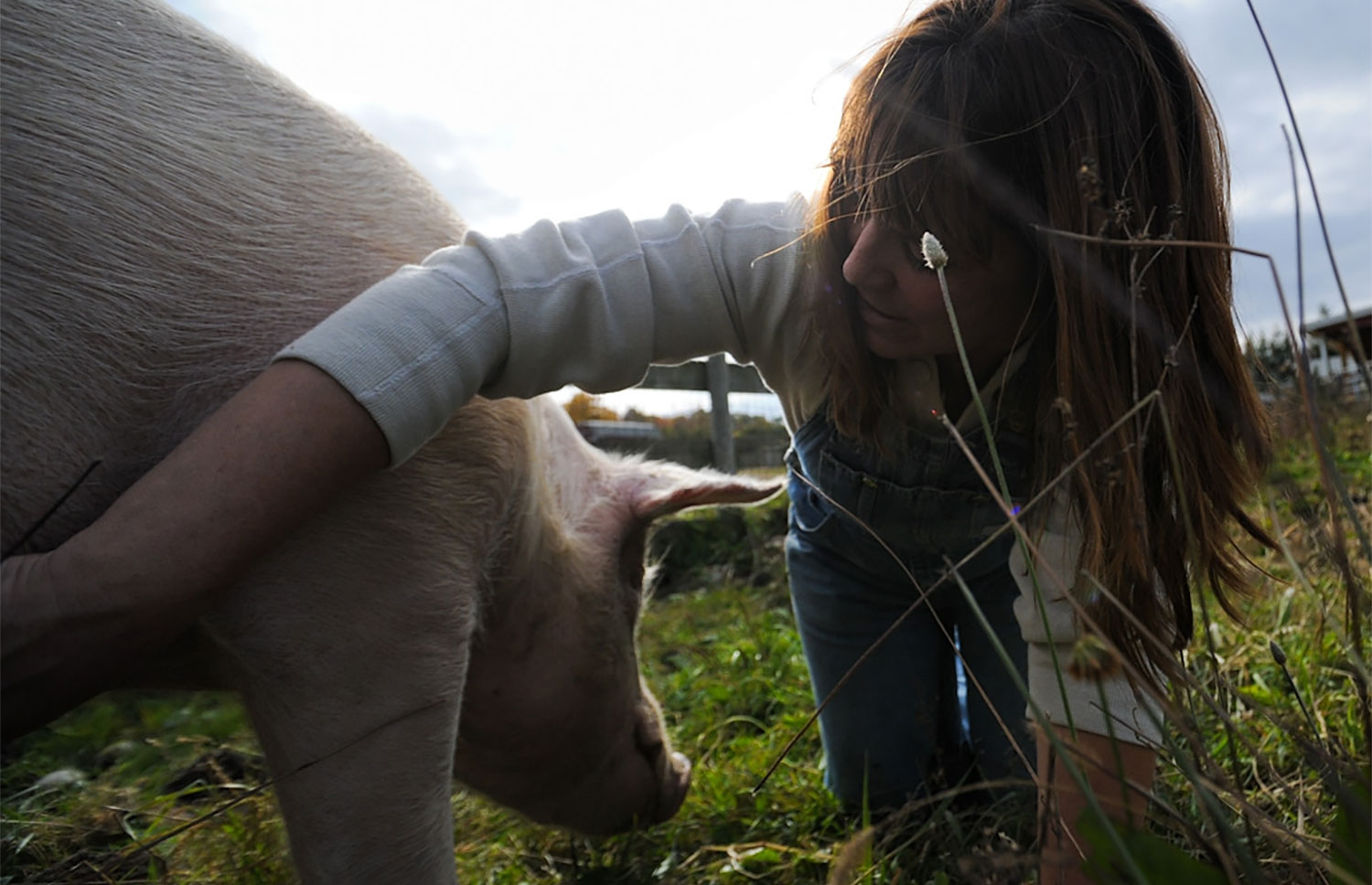
The Organic Livestock and Poultry Standards Rule

In October 2023 the Organic Livestock and Poultry Standards rule was issued by the U.S Department of Agriculture, which is the first national farm animal welfare standard for products listed under the ‘organic’ label. These landmark federal regulations, create new protections under the Organic label, such as banning extreme confinement (i.e gestation crates and battery cages for hens), and require year round outdoor access for all animals, so they are able to move and stretch at all times. It also bans cruel procedures such as tail docking of pigs and cattle, face branding, beak cutting (after 10 days of age), induced molting, and mulesing of sheep. OLPP is a huge win for animals, and a new comprehensive set of standards for farm animal welfare.
In addition, hormones are prohibited, and antibiotics are not allowed beyond the first day of life (which was one of the few original previous requirements for animal products sold under the organic label).
Unfortunately some of the new rules related to poultry, will not be implemented for another five years, but the changes will directly affect 60 million plus animals currently raised as organic.
It is important to note that fewer than 1% of farmed animals actually live on non-factory farms. The new regulations are still a big win and huge improvement, but no label protects these animals from suffering. ‘Organic” still results in slaughter, and the fear and terror these animals experience before they are killed, no matter how it is marketed or packaged.
Increased Public Awareness

In the last fifteen years there has been a dramatic change in public perception concerning ethical treatment of animals on factory farms. In the past, animal welfare standards were applied only to companion animals, but now more and more people are extending compassion to all animals, including farm animals.
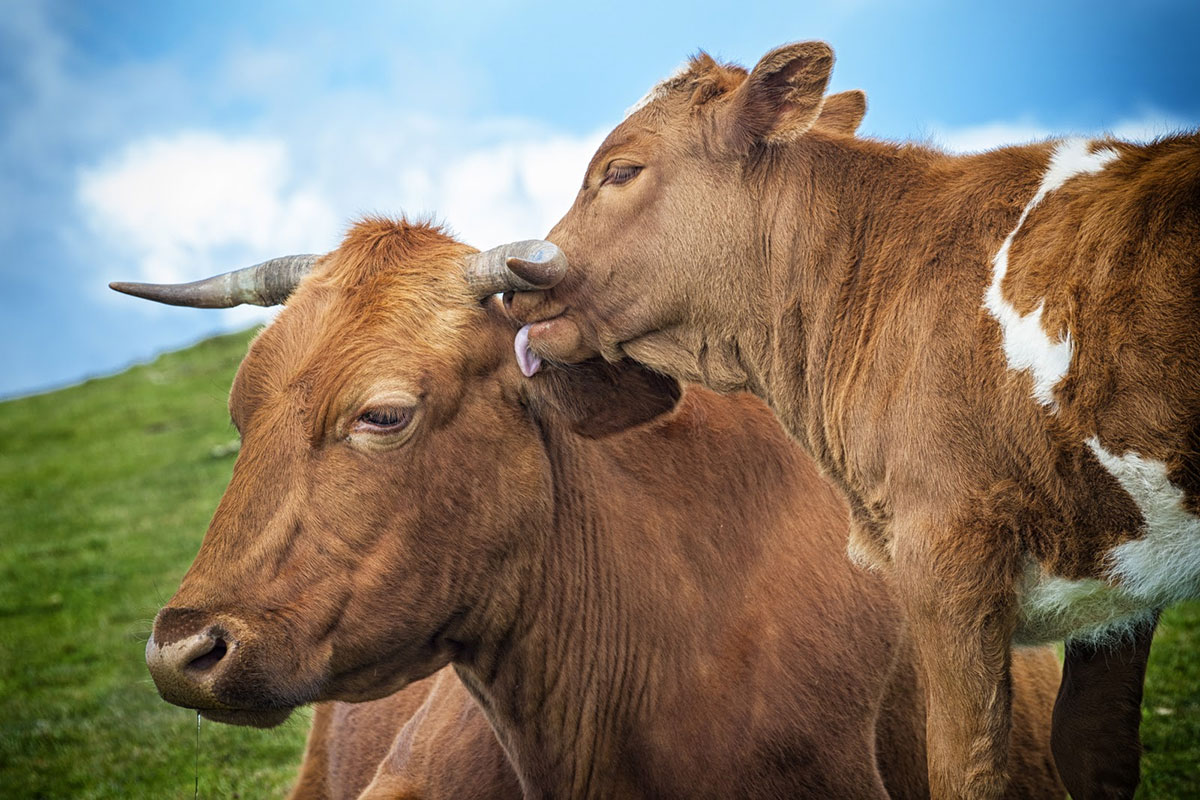
A huge step in the right direction occurred on January 1, 2013. In a landmark decision the European Union banned the use of pig gestation crates after a sow reaches the fourth week of pregnancy. Prior to this, it was common for female pigs to spend most of their lives confined in these crates. A year later in 2014, Canada adopted the European ban and further required that all Canadian pork facilities built or renovated after July 1st, 2014 must use group housing systems instead of gestation crates. In the United States, legislation has been passed in Arizona, California, Colorado, Florida, Maine, Massachusetts, Michigan, New Jersey, Ohio, Oregon and Rhode Island that bans the use of gestation crates. Many other states are considering similar laws. However, farrowing crates, in which female breeding pigs can be kept for up to five weeks, are not banned.
In the last several years, policies have been implemented by some of the largest chain restaurants in the world that require suppliers to discontinue the use of gestation crates. These restaurants include McDonald’s, Burger King, Tim Hortons, and Wendy’s. The world’s largest hog producer and pork processor, Smithfield Foods, has phased out 54% of the gestation crates at its’ company owned farms since 2007, and is on track to eliminate all of them by 2022. Other major pork producers like Tyson and Seaboard are considering similar policy changes.
A huge policy change came in May 2015 when Wal-Mart, America’s largest food retailer, released an official position on animal welfare and antibiotic use in farm animals. The position asks all their food suppliers to put into effect animal farming methods consistent with the “Five Freedoms,” the Farm Animal Welfare Council’s guidelines for the welfare of farm animals.
- Freedom to express normal behavior by providing sufficient space to move freely.
- Freedom from pain, injury, or disease by prevention and treatment.
- Freedom from fear and distress by ensuring conditions and treatment which avoid mental suffering.
- Freedom from discomfort by providing a shelter and a comfortable resting area.
- Freedom from hunger and thirst by ready access to fresh water and a diet that maintains full health and vigor.
Prior to this new policy, Wal-Mart did not have an animal welfare code in place and suppliers didn’t have to adhere to any set of standards. The new policy also asks all suppliers to stop feeding antibiotics to animals unless it is necessary to help treat them for an illness.
Media coverage of the announcement was worldwide; both food industry experts and animal rights organizations have called it a game-changer. Wal-Mart sells more food than any other store and can use its clout to influence the supply chain and the way products are made and sold across the food industry. Wal-Mart said the driving force behind the policy change was its own research, which revealed that with animal welfare standards in place, 77 percent of its shoppers would have more trust for Wal-Mart. In addition, 66 percent said it would increase their likelihood to shop at one of their stores.
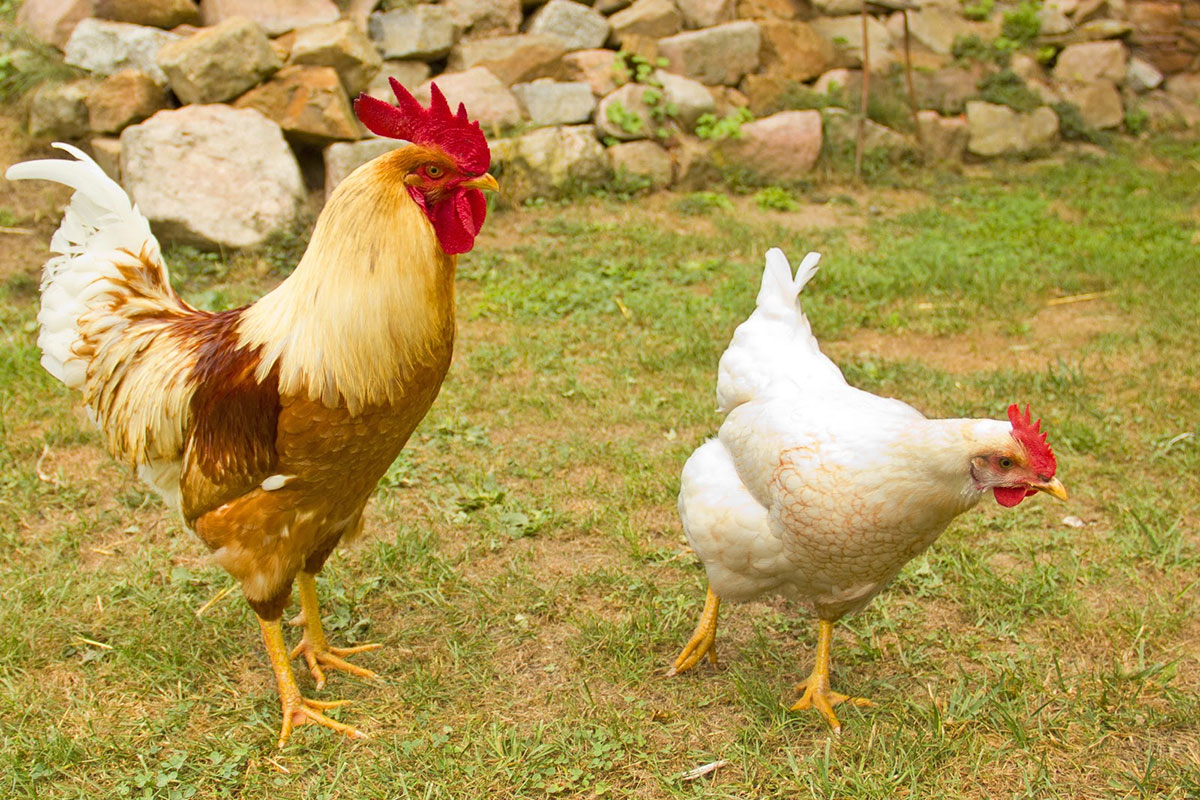
Farm Animal Welfare Legislation

Around the world, farm animal welfare laws are being enacted, making it illegal for farmers to employ methods of containment that are deemed inhumane. Other laws are clamping down on inhumane treatment of the animals by farm workers. A huge step in the right direction occurred on January 1, 2013. In a landmark decision the European Union banned the use of pig gestation crates after a sow reaches the fourth week of pregnancy. Prior to this, it was common for female pigs to spend most of their lives confined in these crates. A year later in 2014, Canada adopted the European ban and further required that all Canadian pork facilities built or renovated after July 1st, 2014 must use group housing systems instead of gestation crates. In New Zealand, it is now illegal to use gestation crates and they are being phased out in Australia. In the United States, legislation has been passed in Arizona, California, Colorado, Florida, Maine, Massachusetts, Michigan, New Jersey, Ohio, Oregon and Rhode Island that bans the use of gestation crates. Many other states are considering similar laws.
In March of 2015, Arizona governor Doug Ducey vetoed a bill introduced by the corporate agriculture lobby that would have declassified all farm animals (including horses) as animals under the state’s anti-cruelty laws. The bill would have changed current anti-cruelty laws to cover only companion animals. Cruel and inhumane practices inflicted on farm animals would have been made legal. Governor Ducey stated, “We must ensure that all animals are protected, and mindful that increasing protections for one class of animals does not inadvertently undercut protections for another.”
A massive victory for factory animals was the passage of Prop 12 in 2018, which protects farm animals in California from extreme confinement. The measure was self-titled the Prevention of Cruelty to Farm Animals Act. The proposition established minimum requirements for farmers to provide more space for egg-laying hens, breeding pigs, and calves raised for veal. California businesses are banned from selling eggs or uncooked pork or veal that come from animals housed in ways that do not meet these requirements.
Since it’s passage Prop 12 has been under constant threat from the meat industry, as the improved welfare standards mean increased costs for chicken, pig and veal producers. In 2019 The National Pork Producers Council (NPPC) and the American Farm Bureau Federation (AFBF) sued, claiming that Prop 12 violated the Commerce Clause of the U.S. Constitution. The case went all the way to the Supreme Court, where in May 2023 it was successfully defended by animal rights groups in a vote of 5-4. The win to uphold Prop 12 is huge for many reasons, but in addition to ensuring more space for animals, it gives states the ability to give more protections to farm animals, which is a right that cannot be overstated.
A huge step in the advancement of humane treatment of farm animals has taken place in Israel, a country at the forefront of animal rights, where over 400 cameras and 50 digital recorders have been installed in all 50 slaughterhouses throughout the country. They operate 24 hours a day, seven days a week, feeding a live video stream to supervisors within the facility as well as to Agriculture Ministry veterinary inspectors in an off-site ministry control center. By law, every room in which animals are present must have a camera. The significance of this bold move by Israel to force slaughterhouse personnel to adhere to humane treatment regulations cannot be overstated.
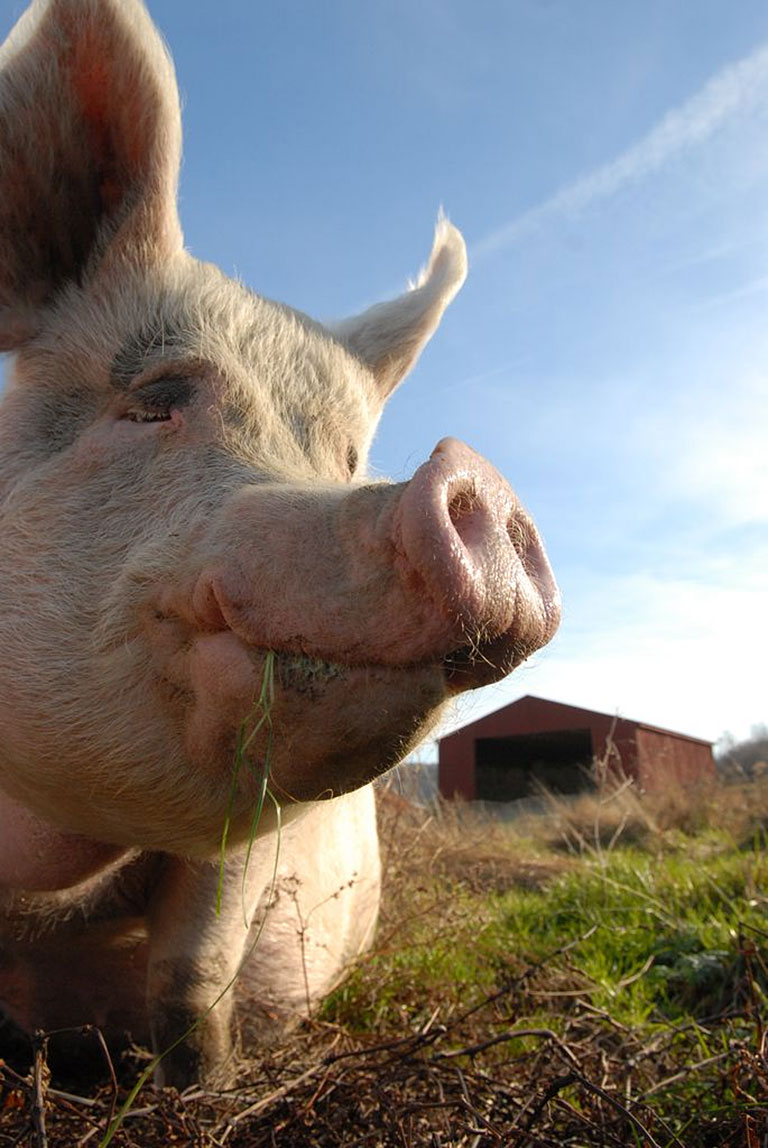
Some local and regional governments are even beginning to educate their constituents to the benefits associated with not eating any farm animal products at all.
Another major step has been the withdrawal of major corporate support for ALEC, The American Legislative Exchange Council, which has been instrumental in pushing “ag-gag” bills thru state legislatures. Ag-gag laws make it illegal to take any photographic or video footage in agricultural factory farms without permission, making it almost impossible to document animal abuse within the facilities. ALEC has traditionally been the recipient of huge donations from large corporations, but recently has lost support from more than 100 major corporations including eBay, Facebook, Google, British Petroleum, Shell, and the American Advancement of Retired Persons (AARP).
Scientific Studies

More and more scientific data is coming out that proves what many people have known all along–cows, chickens, goats, turkeys, pigs, sheep and other species of farm animals are just as curious, emotive, intelligent, and individual as our own companion animals. Science is proving that they suffer and feel pain just as much as dogs, cats, or human beings. In 2014, scientists from Wageningen University in the Netherlands conducted a series of experiments with ninety-six pigs to determine what level of empathy, if any, they experience for one another. The scientists were shocked at the results. In addition to feeling a high level of empathy for the other pigs as they experienced stressful situations, they cognitively experienced the feelings in a way that was previously thought to be distinctly human.
Scientists and animal rights advocates in Germany came together and developed a technology that can potentially end the mass slaughter of the 45 million male chicks born into the country’s egg industry each year. Researchers developed a method that determines the sex of each fertilized egg before the chick inside develops. This enables the removal of all male-identified eggs before the fetus develops, leaving only the female eggs to hatch. This technology was introduced in 2018, and makes Germany the first country in the world to implement this practice.
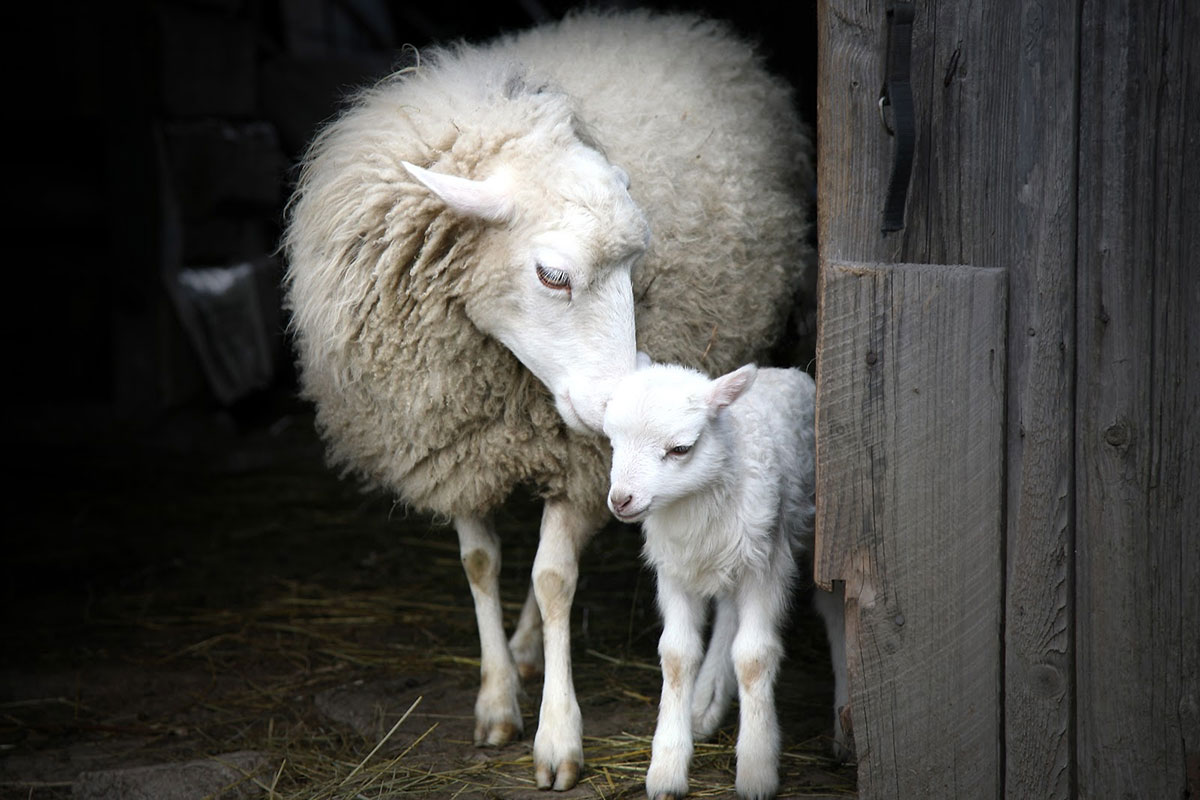
Undercover Videos Exposing Cruelty and Inspiring Change

Much of the increased public awareness of the suffering farm animals endure on factory farms is a direct result of undercover videos. Animal rights activists have risked physical harm by secretly filming the conditions inside factory farms and showing the rampant abuse that takes place, which seems to be common. These films have played a major role in convincing law enforcement, legislators, and the general public that the current legal standards protecting farm animals simply aren’t enough. Not only have the films brought to light an industry accepted culture of animal abuse, they have resulted in numerous animal cruelty convictions. In 2008, undercover footage was released by the Humane Society of the United States (HSUS) of horrific abuse at a Westland Hallmark Meat Company slaughterhouse in Chino, California. The footage showed workers torturing cows too weak and sick to stand or walk on their own (called “downer cows”). The cows were kicked, hosed with high pressure hoses, then rammed with a forklift and dragged with chains, all in an attempt to get them to walk to their deaths. The footage resulted in one of the largest meat recalls in U.S. history and the largest settlement ever—$497 million—for a case involving animal abuse.
In 2011, a worker at Conklin Dairy Farms in Plain City, Ohio was sentenced to eight months in jail and ordered to pay a $1,000 fine for maliciously abusing cows and calves. The charges were a result of undercover footage filmed by a Mercy For Animals undercover investigator during a four week period in 2010. The court also ordered the worker to receive mandatory animal abuse counseling and barred him from contact with animals for three years.
There are countless undercover videos and footage that show systematic abuse and cruelty on factory farms. Sadly many of the videos show the same patterns and types of abuse that these animals endure, and new videos are continuously being released. The undercover video footage by Animal Equality, Mercy for Animals, Animal Outlook, HSUS, and other farm animal advocacy organizations is forcing corporate animal agriculture companies to impose more humane handling and treatment of animals by their employees or be subject to unwanted lawsuits, fines, and media attention. Even the recently adopted ag-gag laws in some states haven’t kept new undercover footage from being released and inspiring people to demand change.
Farm Sanctuaries

The rescued animals at the farm sanctuaries are ambassadors for the farm animals currently suffering in factory farms. Hilda the sheep, the first animal rescued by Farm Sanctuary, touched the hearts and minds of millions of people including legislators, policymakers, and visitors to the sanctuary with her gentle, forgiving, and playful personality. When she was rescued by Gene Baur and Lorri Houston, she was lying near dead on top of a pile of dead animals at the Lancaster Stockyards. Baur and Houston oversaw her medical recovery and brought her to Farm Sanctuary where she lived the rest of her life roaming the green pastures.
Many farm sanctuaries have been created throughout the world over the last ten years. The first one, Farm Sanctuary in upstate New York, opened in 1985. These inspired rural locations provide a home for rescued farm animals and give them a place to live out the remainder of their years with dignity, surrounded by compassion and love. Moreover, because most farm sanctuaries are open to the public, they give people the opportunity to meet and get to know farm animals on a personal level. For many, this interaction with the rescued animals opens their eyes to the reality that farm animals are no different than their pet dog or cat.

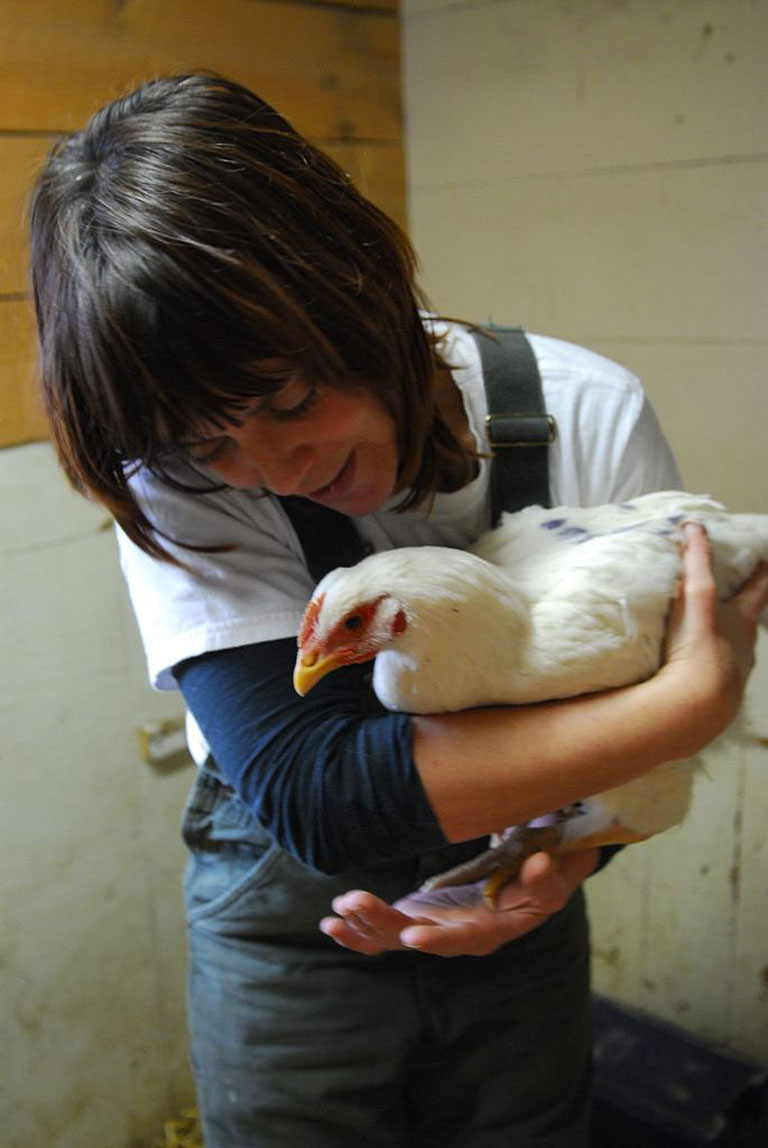
Edgar, a humble and kind-hearted pig rescued from an Australian pig farm, inspired Pam Ahern to create Edgar’s Mission Farm Sanctuary. Edgar was a gentle giant and a dear friend to the other rescued animals at the sanctuary. His humanity touched thousands of visitors during his lifetime. He was a true ambassador for pigs and farmed animals throughout Australia.
Edgar was a gentle giant and a dear friend to the other rescued animals at the sanctuary
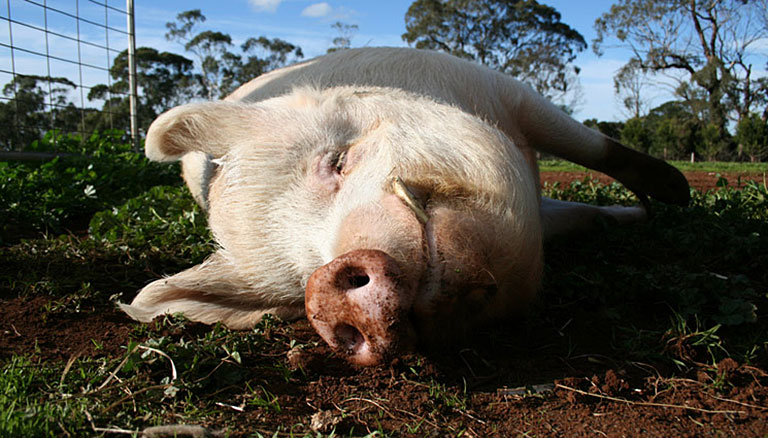
Compassionate Eating Habits

Possibly the greatest indication that people’s perceptions of farm animals is changing is the increased number choosing to no longer consume animal products as food. The percentage of vegetarians and vegans worldwide has dramatically increased over the last ten years. The number of U.S. consumers identifying as vegan grew from 1% to 6% between 2014 and 2017, a 600% increase, according to GlobalData.
U.S. consumers spent nearly $1.9 billion on plant-based milks in 2018 and an impressive $3.3 billion on plant-based foods in 2018. New vegetarian and vegan restaurants are popping up everywhere, and the success of Beyond Meat and Impossible Foods, is nothing short of a phenomenon. And this change is happening worldwide, India is ranked first in the world with 38% of the total population being vegetarians. Israel is 2nd at 13%, followed by Taiwan(China)(12%), Italy(10%), and Germany, Austria and the UK(all at 9%). Brazil follows at 8%. The vegan and vegetarian movement is exploding. In June 2024 the City of West Hollywood, California passed a groundbreaking plant based policy. The resolution requires all city-produced events to serve plant based food and refreshments by default. Animal products will only be available upon request. The unanimous decision is effective immediately.


Action
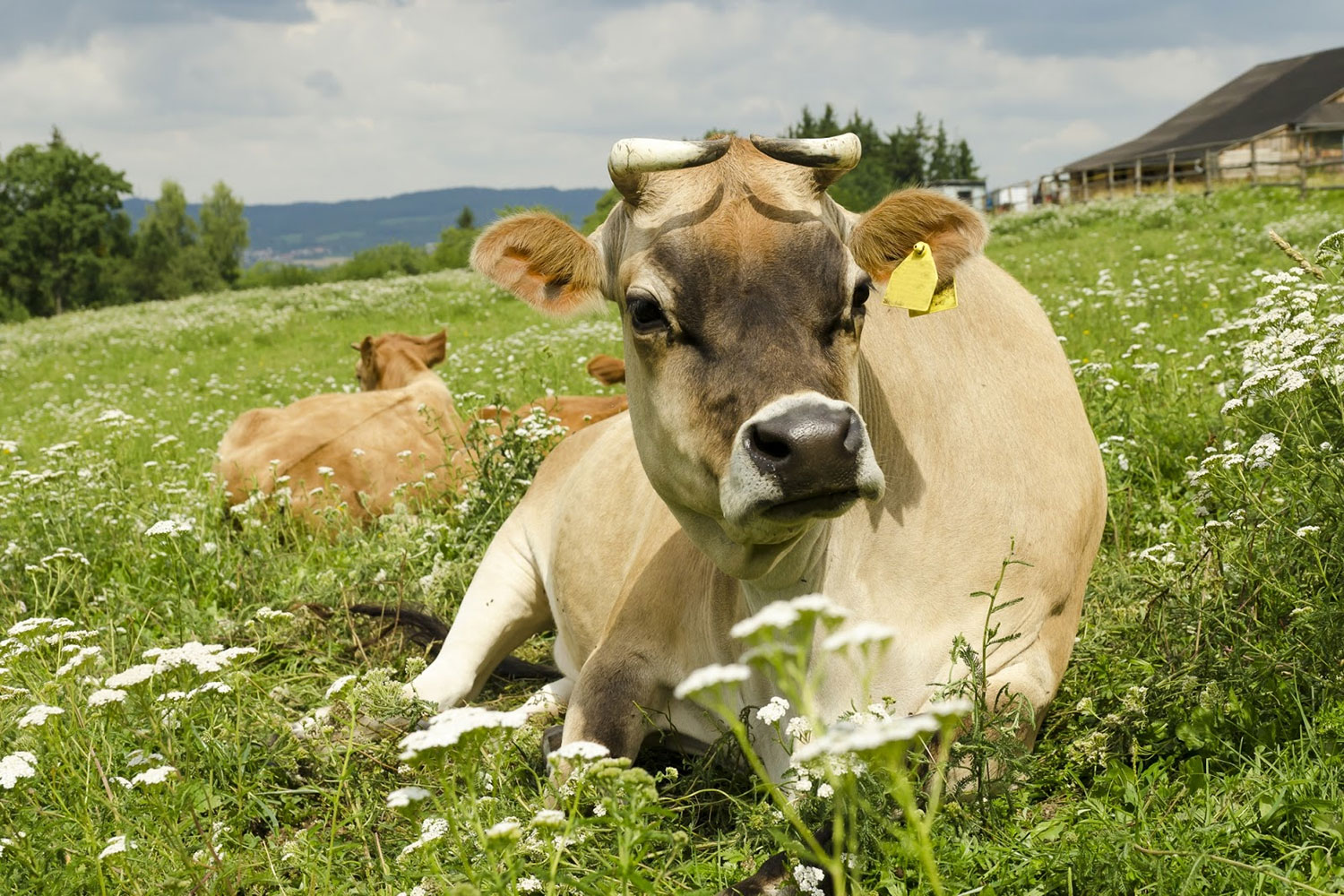
You can be a part of the effort to end the exploitation of farm animals. By choosing to take action on behalf of these animals who endure unthinkable suffering on factory farms, you become an integral part of the effort to educate the public that farm animals are no different than our companion animals. They possess the same feelings, intelligence, and desire to live as our pet dogs and cats. Here are some ways you can help:
consider choosing a plant based diet

The most practical way you can change the way farm animals are treated is by not purchasing the products that are a result of animal factory farming. Nowadays, it’s easier than ever to stand up for farm animals by choosing food sources and clothing items that are not derived from animals. With so many plant-based alternatives and incredible recipes available, reducing or eliminating animal products from your meals doesn’t mean missing out on delicious food or essential nutrients. Countless plant-based websites are a click away and will help make the vegan transition smooth and easy.
Vegan Kit
Vegan Coach
The Vegan Society—How to go Vegan
Vegalicious
Physicians Committee For Responsible Medicine Vegetarian Starter Kit
PETA Vegan Starter Kit
Animal Outlook Vegetarian Starter Guide
Positive Health Wellness – Everything You Need to Know About Going Vegan
Thrive Cuisine Vegan Shopping List
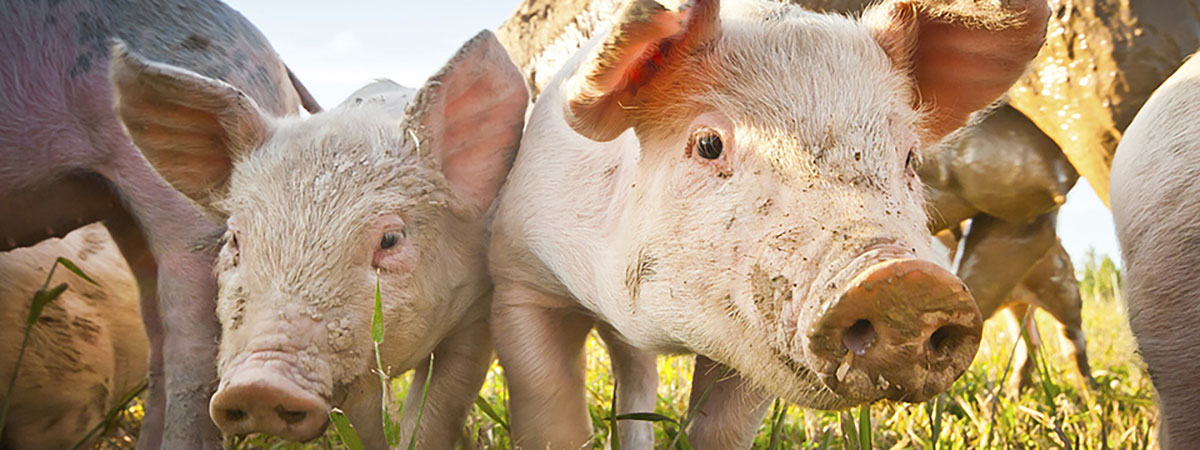
Support Farm Animal Advocacy Organizations & Farm Sanctuaries

Mercy For Animals
Mercy For Animals is one of the world’s most vocal and recognized farm animal advocacy organizations. The footage from their undercover operations in factory farms has been a huge factor behind mounting public pressure for farm animal welfare reform. They work at both the national and regional levels, working to pass farm animal welfare legislation and repeal ag-gag laws. On the local level, they conduct effective public awareness campaigns, educating people about the conditions on factory farms. One of their most successful initiatives has been the “Why Love One But Eat The Other?” billboard and public transportation campaign. These powerful images implore viewers to ask themselves if there is really a difference between farm animals’ and companion animals’ ability to feel, experience, and love. The Mercy For Animals website contains a comprehensive action center describing the numerous ways to make a difference for farm animals and offers great tips on how to successfully make the transition to veganism. Mercy For Animals depends upon donor support for their ongoing advocacy and undercover operations. Supporting Mercy For Animals financially is a very practical way to make a difference for farm animals.
A lot of fundraising took place to bring this Toronto Transit Commission campaign to life.
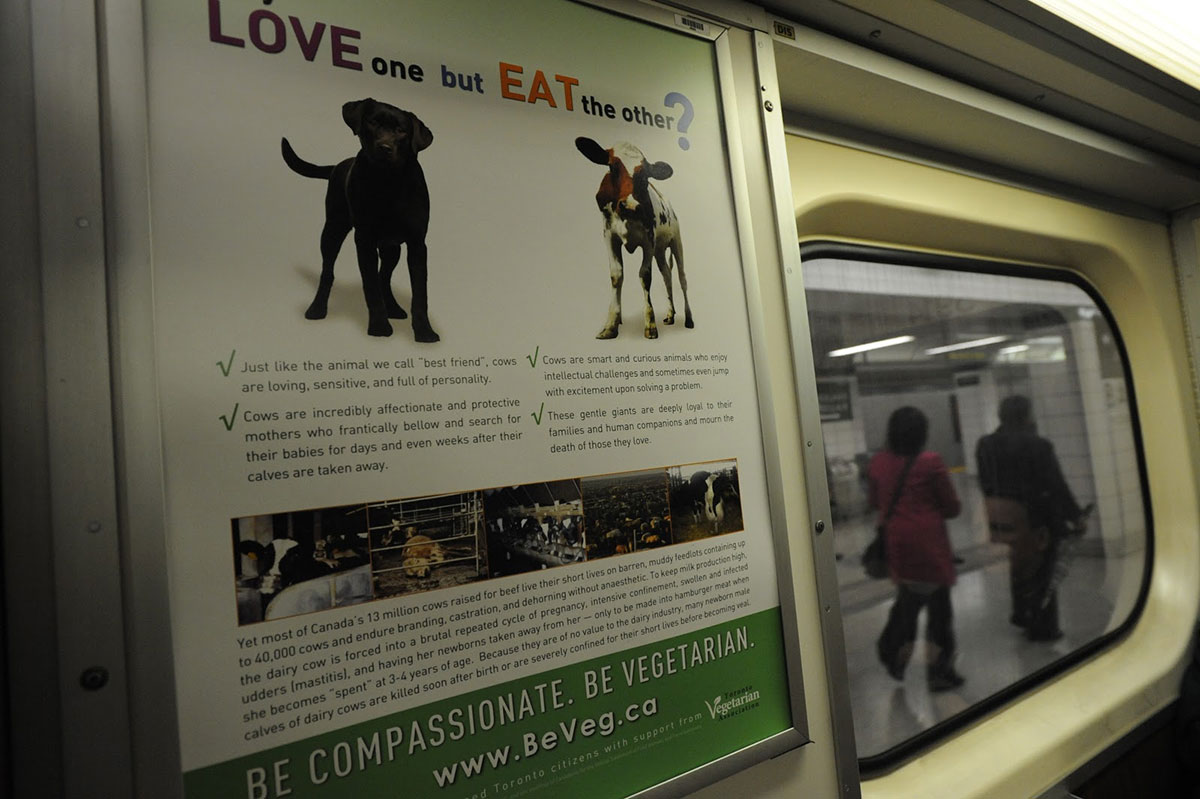
animal outlook
In just 20 years, Animal Outlook has gone from a high school extracurricular club to a powerful national voice for farm animal advocacy. They have produced numerous undercover factory farm videos that have resulted in cruelty to animals convictions as well as the shutdown of an entire slaughterhouse. In addition to their undercover operations, Animal Outlook is the most active farm animal advocacy group lobbying restaurant chains across North America for cruelty-free options. They have successfully convinced Subway, Wendy’s, Tim Horton’s, Pita Pit and Dunkin Donuts to offer vegan options on their menus. Their support and promotion of the famous Meatless Monday campaign has changed the dietary habits of millions of Americans and people throughout the world. Financially supporting Animal Outlook’s advocacy and undercover operations is great way to make a difference for farm animals.
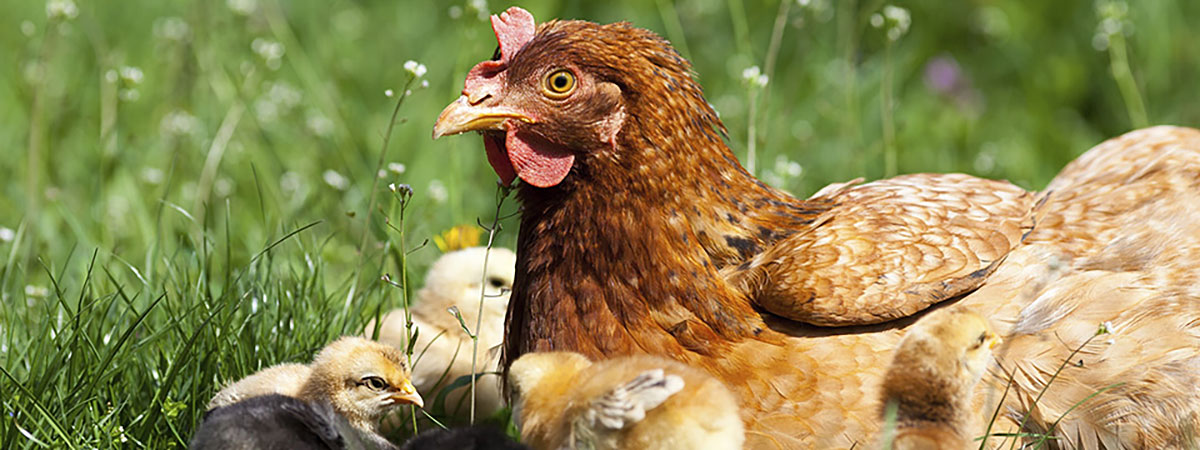
Farm Sanctuary
Farm Sanctuary is a farm animal advocacy organization founded by Gene Baur and Lorri Houston that operates three American sanctuaries for rescued farm animals. The first sanctuary is located in Watkins Glen, New York and houses over 800 rescued animals. Founded in 1986, it was America’s first home for rescued farm animals and has since inspired the creation of hundreds of other farm sanctuaries worldwide. The other two Farm Sanctuary locations are in Orland and Acton, California, and they care for over 500 rescued animals.
Farm Sanctuary not only provides homes for rescued animals but actively promotes laws and policies that support animal welfare/protection, and veganism. Farm Sanctuary has been the driving force behind numerous state farm animal welfare laws—including the pig gestation crate ban in the state of Florida—and also lobbies at the federal level. Baur has written two books about Farm Sanctuary. The second one, Living the Farm Sanctuary Life: The Ultimate Guide to Eating Mindfully, Living Longer, and Feeling Better Every Day was published in April 2015 and includes 100 vegan recipes selected by different chefs and celebrities. Please consider donating to Farm Sanctuary to help them continue the rescue and shelter of abused farm animals as well as lobbying for an end to farm animal abuse.
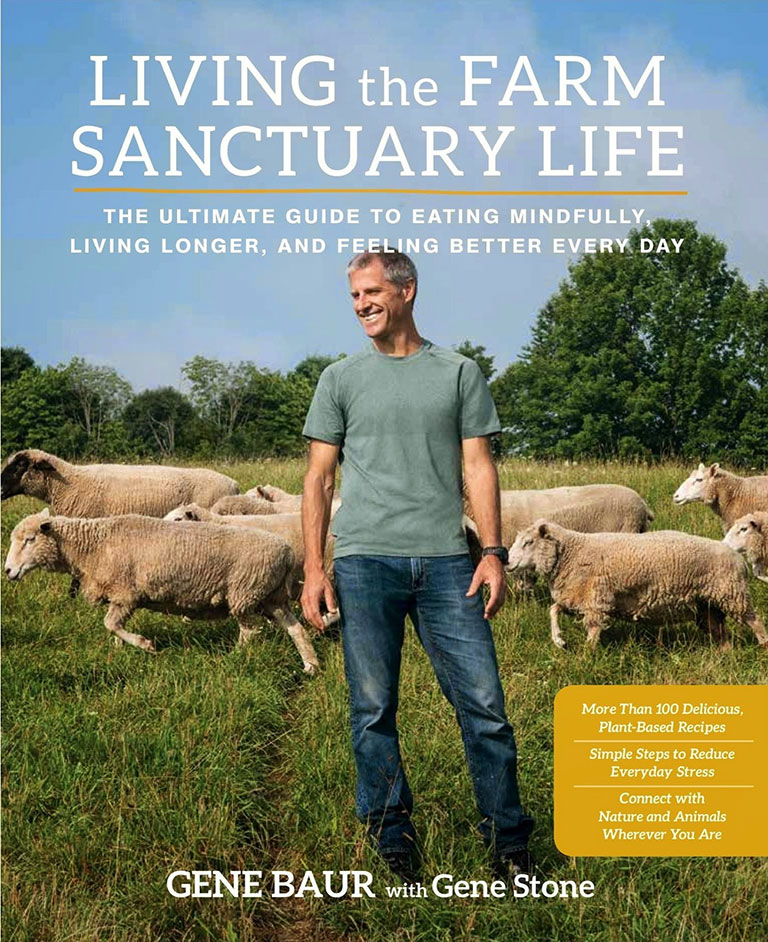
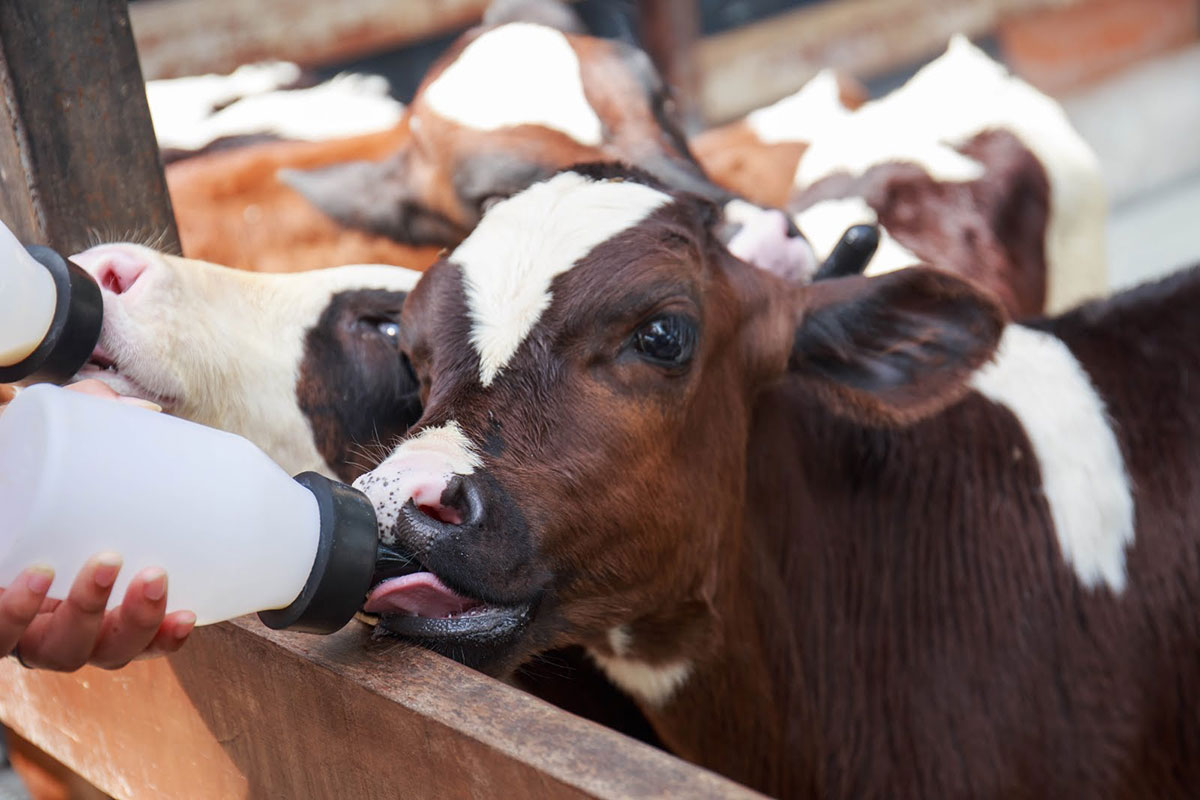
Volunteer at a Farm Sanctuary
Hundreds of farm sanctuaries exist throughout the the United States and around the world. These shelters of love are the difference between life and death for thousands of rescued farm animals. All of these facilities are in need of financial support and volunteers to help care for the animals and provide maintenance for the barns, enclosures, and pastures. Visit the Compassionate Farming Education Initiative to find a farm sanctuary near you. Get involved!
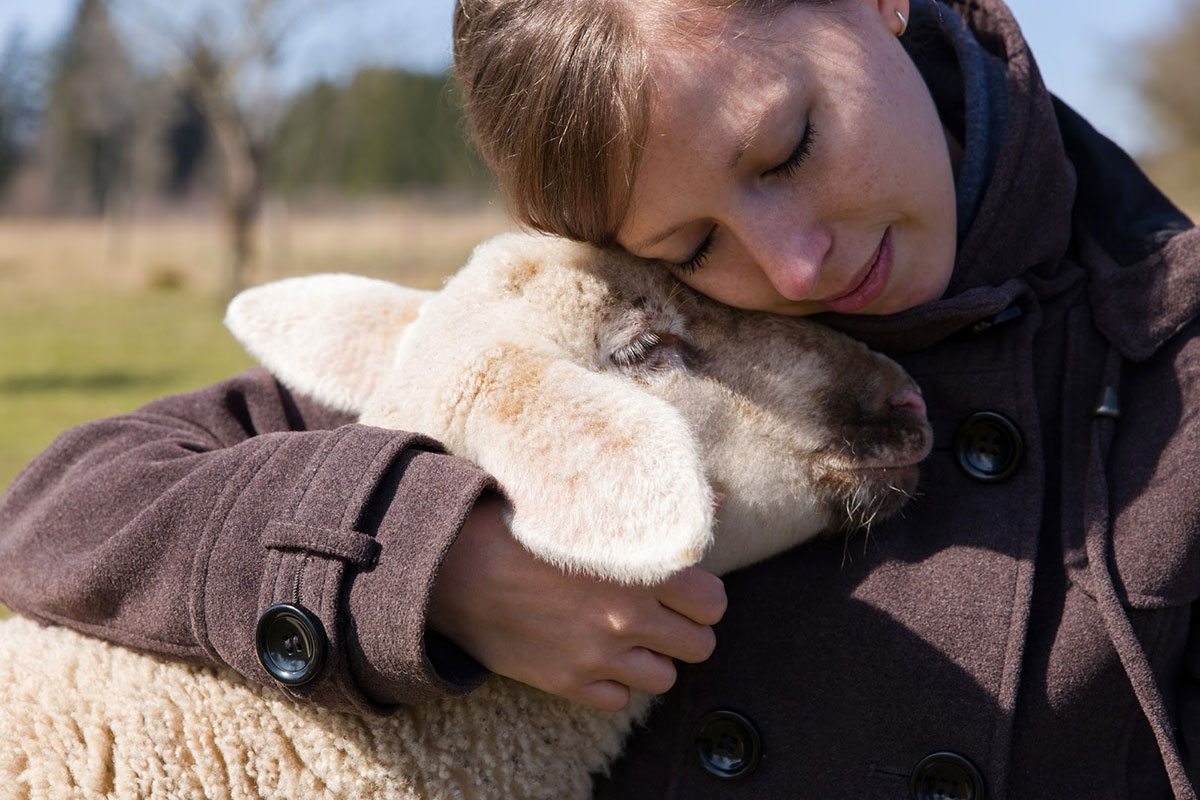
Educate friends, family and your community about how animals on factory farms are treated and what can be done to change it

Tell your friends and family about the treatment of farm animals on factory farms. Show them some of the undercover footage filmed inside factory farms by farm animal advocacy organizations.
Voice your support for farm animal welfare legislation. Contact your state/provincial and federal lawmakers, urging them to enact tougher farm animal anti-cruelty laws and implement humane farm animal housing requirements. Click here to find your US state congressman and senator. Click here to find your US federal congressman and senator.
Tell your friends and family about the treatment of farm animals on factory farms
Post information about farm sanctuaries and factory farming on facebook and other social media sites

Most farm animal advocacy organizations and farm sanctuaries have facebook and twitter accounts. Follow their pages and share photos and posts with your friends and family. Keep them up to date on farm animal welfare news and farm animal advocacy programs.
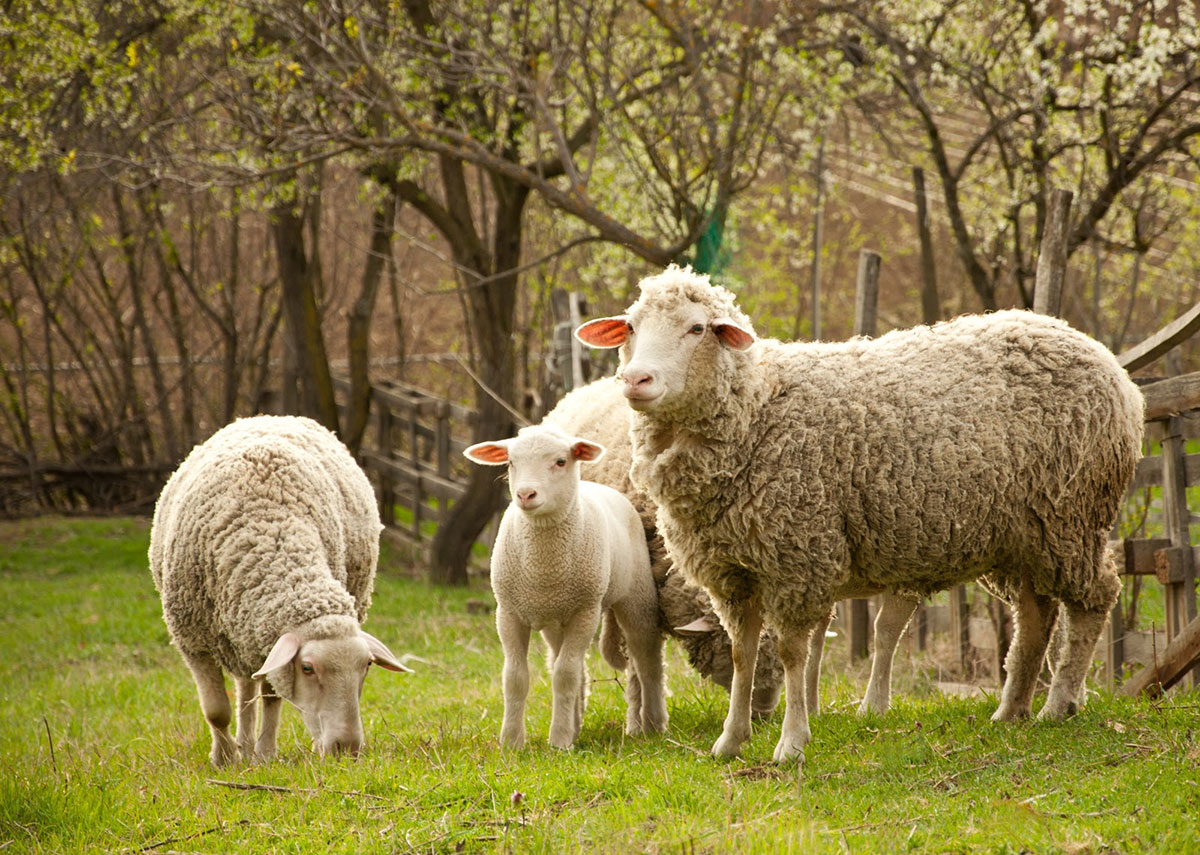

Facts
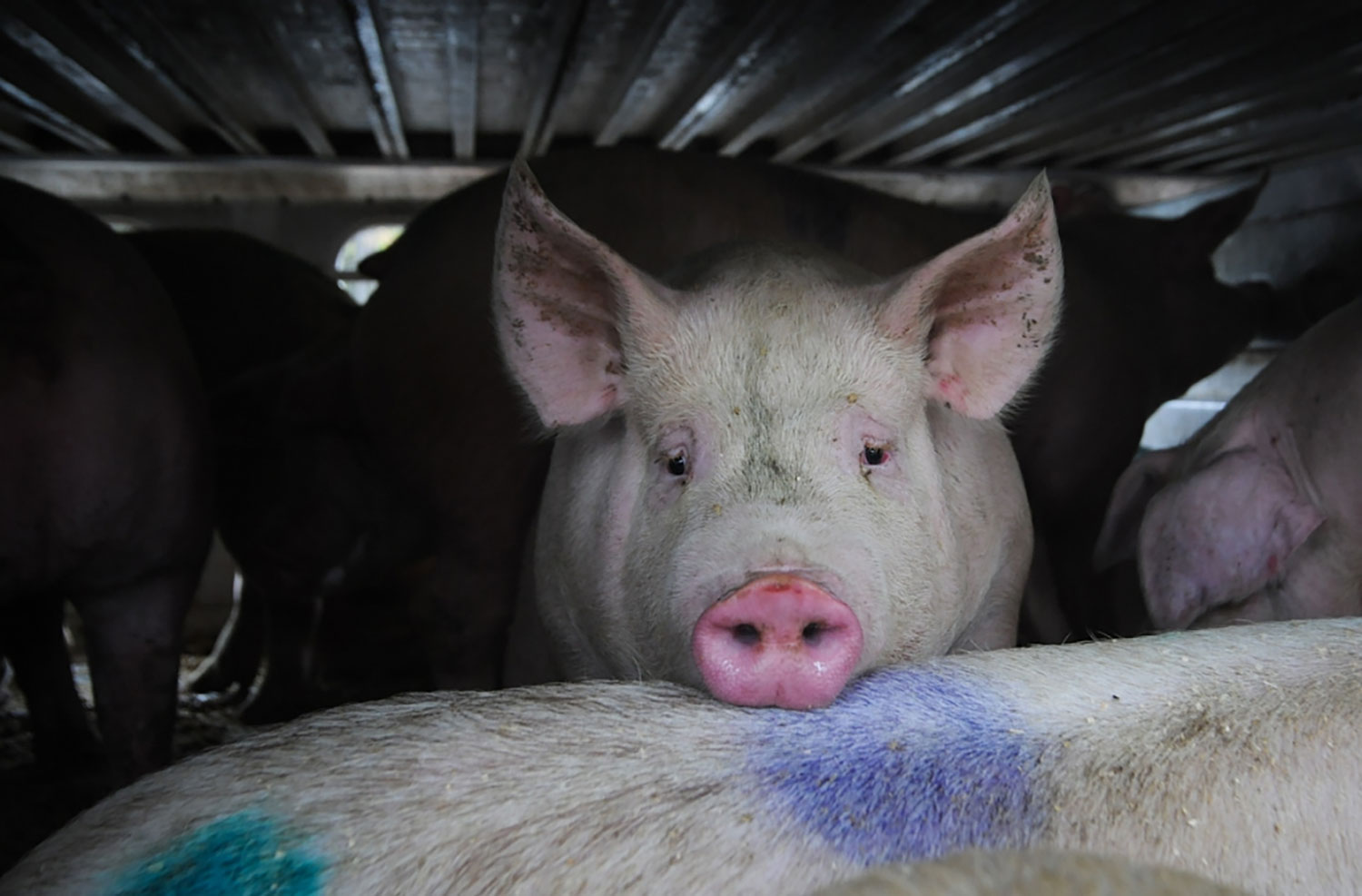
Over 72 billion land animals are killed for food each year. That is approximately 200 million animals killed each day.
Ninety-nine percent of all meat in the United States and nearly 70% worldwide originates from factory farms. Animal agriculture is the main source of deforestation and water pollution throughout the world.
In the United States, more than 70% of all antibiotics produced by the pharmaceutical industry are fed to farm animals. These drugs are used to increase growth and prevent the animals from getting sick as a result of the cramped, unsanitary conditions on the vast majority of factory farms.
More chickens are consumed than any other animal in the United States, yet fowl are exempt from the Humane Slaughter Act. Farmers and slaughterhouses are allowed to kill chickens, turkeys, and ducks in any manner they choose without regard to the suffering inflicted upon the birds. Other farmed animals including cows, pigs, sheep, and rabbits are routinely slaughtered while still alive. The Humane Slaughter Act requires that all animals killed in slaughterhouses be fully unconscious before death, but many animals are fully conscious at the time of slaughter due to the speed of the assembly line and lack of policy enforcement.
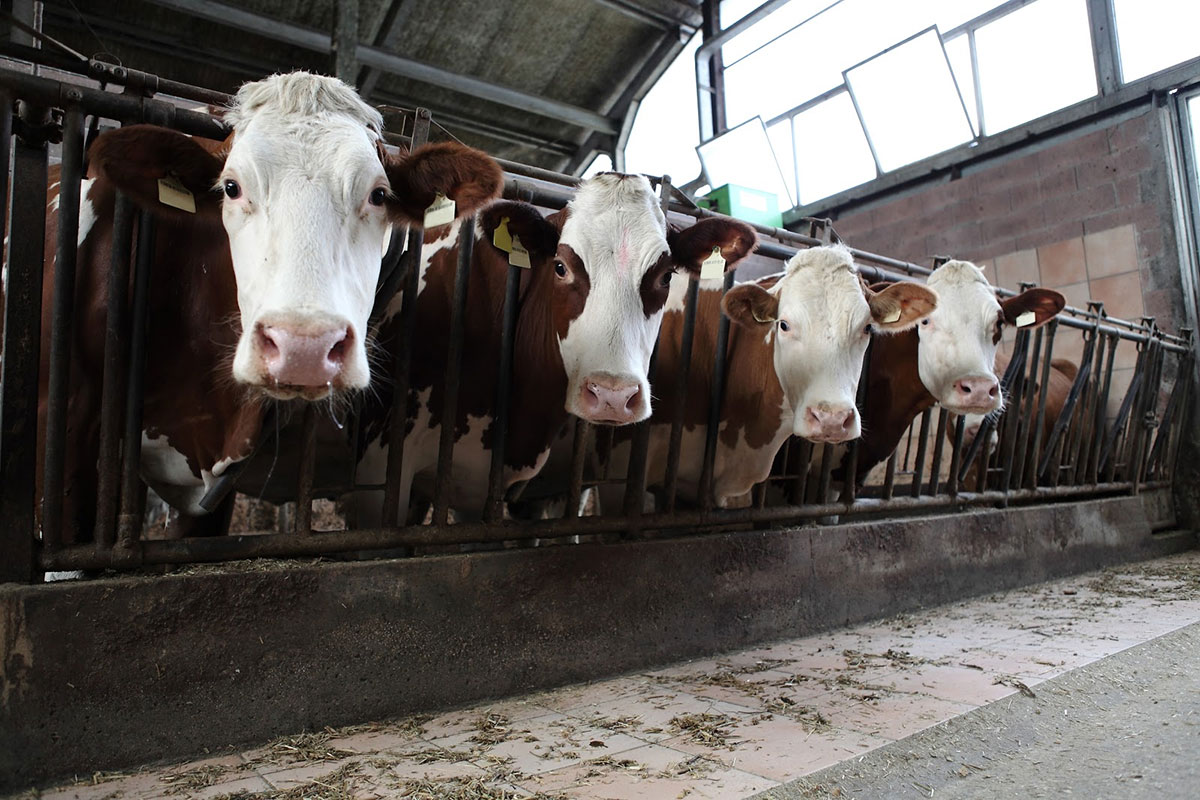

Explore
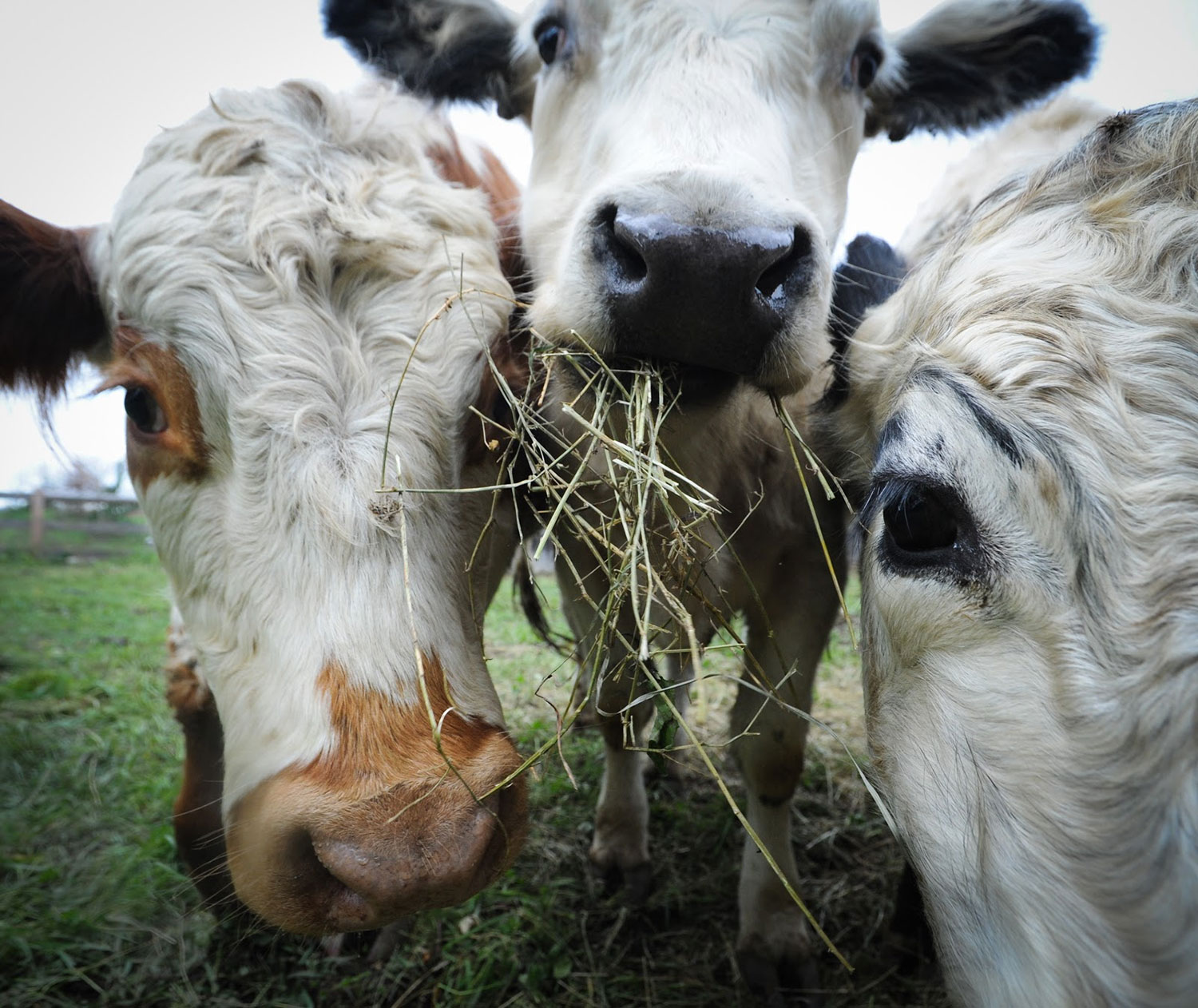
See

Explore the fascinating world of farm animals through these video clips and see how their feelings and emotions are no different than those of our beloved companion animals.
First Day of Spring
Dogs aren’t the only animals who burst with happiness when going outside after being cooped up for a long period of time. Watch these cows being led out to pasture for the first time after a long, cold winter.
Interspecies Play
Animals don’t have to be of the same species in order to play together and be friends. Susie is a rescued boxer breeding dog and Tabitha a rescued pig residing at the Hillside Farm Sanctuary. They are close friends and know how to have a great time together.
Give Me a Hug, My Friend
Love Bird and Mason have a very close friendship. Whenever Mason walks into the yard where Love Bird lives, she rushes up to him and gives him a hug.
Welcome Home
In this video, Mason has just returned home from getting his hair cut. Naturally, Love Bird is there to greet him.
Blitzen, Lawrence, and Alexander
Watch as these three sick calves are nursed back to health and given a new life at the Farm Sanctuary.
Turkey Recess
Watch these baby turkeys run in the pasture like children coming out of a school for recess. Rescued from a factory farm, they are now experiencing freedom at Farm Sanctuary in New York.
Listen

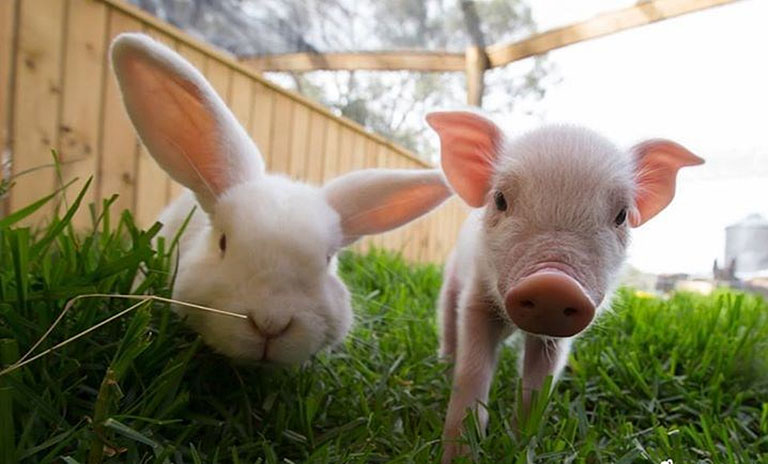

Farm animals communicate with members of their own species and other animals through verbal exchanges, facial expressions, body language and a variety of other ways. Each species possesses a wide range of vocalizations reflecting all types of emotions including joy, fear, aggression, play, and contentment. Watch these videos and listen to animals verbally expressing their feelings.
Grunts of Satisfaction
Fiete, a rescued cow happily living at the German farm sanctuary Hof Butenland, unmistakably communicates contentment and satisfaction to her friend who is affectionately petting her as they lie in the pasture together.
Interact

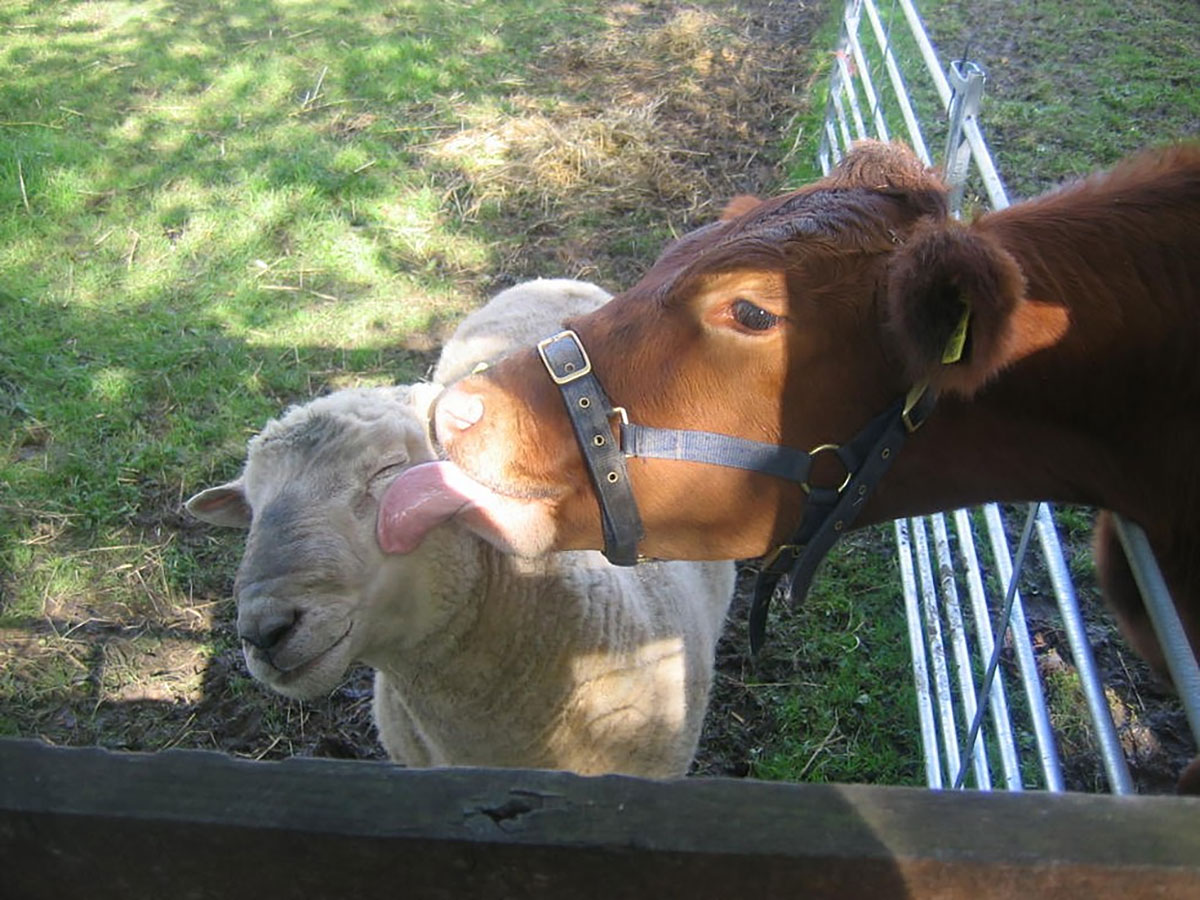
You can be an active member of the growing global movement of people who are standing up for the proper treatment of farm animals. Mercy For Animals has a fantastic action center on their website which describes numerous ways you can make a difference for farm animals wherever you live. Through social media, you can become friends and connect with other dedicated farm animal activists from around the world. Most farm animal advocacy organizations have social media pages that post news and important information on a daily basis. The links for the social media accounts of some of these groups are listed below, in addition to a link to their websites. Tell your friends, family, and communities about what goes on behind the closed doors of factory farms. Make a difference!
Farm Animal Voices
Learn

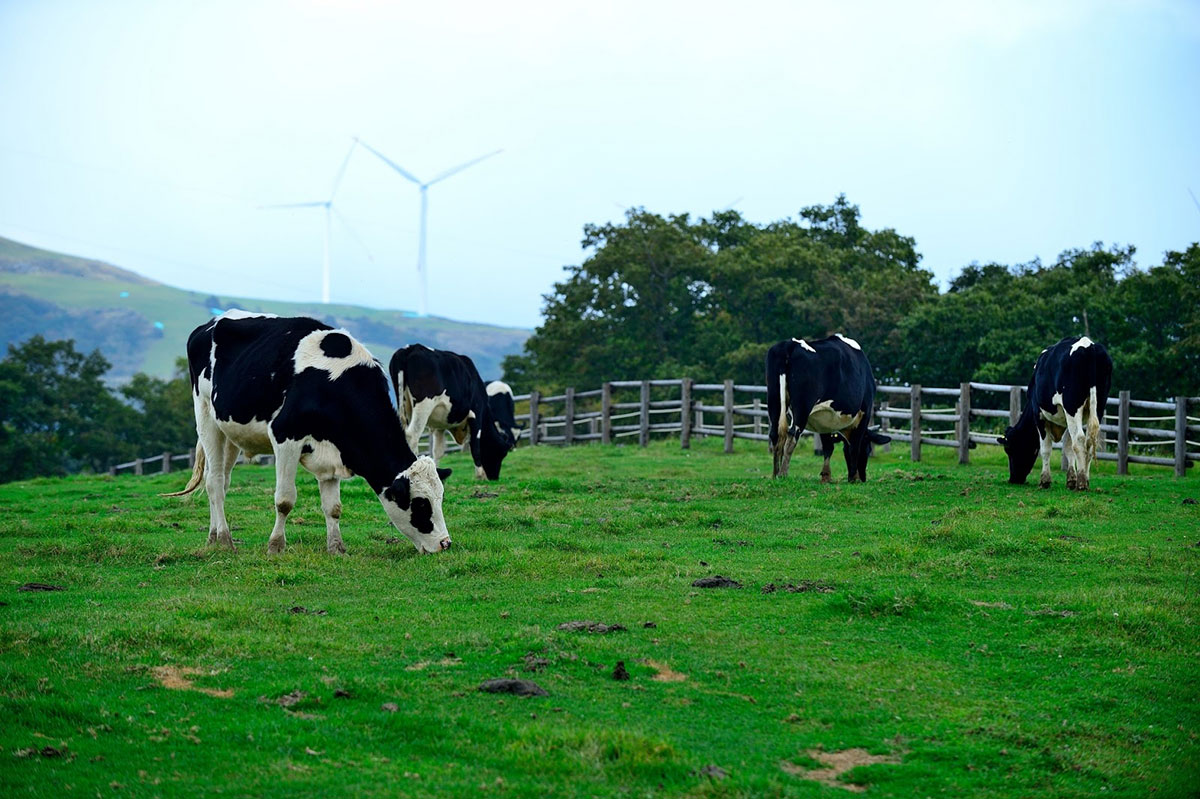
Numerous farm sanctuaries throughout the world have rescued tens of thousands of farm animals and given them a peaceful, dignified home to live out the remainder of their lives. Most of these rescued animals experienced unspeakable suffering on factory farms.
Some of the farm sanctuaries have YouTube channels where you can view videos of the rescued animals finally living at peace in natural surroundings. Millions of people have been inspired by the videos of these animals and have begun to reconsider how they view farm animals. Below is a small list of sanctuaries with links to their YouTube channels.
Animal Place
Barn Sanctuary
Edgar’s Mission
Farm Sanctuary
The Gentle Barn
Hillside Farm Sanctuary
Hof Butenland
Pigs Peace Sanctuary
Sasha Farm
Woodstock Farm Sanctuary
The Mercy For Animals, Animal Outlook, and Farm Sanctuary websites are all great sources of information concerning farm animal treatment in factory farms and the movement to bring the abuse to light. These sites are fantastic resources for those who want to educate and make a difference in their communities. The Farm Animal Rights Movement website is a another source that features numerous articles and information about the ongoing movement to end the suffering of farm animals.
Watch

The following documentaries give an in-depth look at farm animals, farm sanctuaries, and the industrial farming industry. Some give detailed accounts of conditions inside factory farms, while others give glimpses into the lives of the animals and the people trying to save them.
Game Changers
The Last Pig
Peaceable Kingdom
Cowspiracy
Food, Inc.
Meet the Animals at Farm Sanctuary
Farm Sanctuary—The Sonny Side of Life
Farm Sanctuary—Life After Industrial Farming: Dairy Cows
Farm Sanctuary—It Doesn’t Have to Be This Way
When Pigs Cry
Pig Vision: The Journey of Two Brothers
The Private Lives of Chickens
The Private Lives of Pigs
The Importance of Farm Sanctuaries
Can You Face the Reality of Factory Farming?
73 Cows
